#also interesting that they seemed to have used the term 'sensation film' to describe the style
Text
True Colors

In the other world, she encountered the same black cat that she found in her world; this time, the cat could talk like a human being. She asked the cat if it was the “other cat”, to which it responded that he was the same cat. The black cat was sarcastic and self-centered; features that didn’t seem appealing to Coraline but chose to be polite in order to spend time with the cat and ask it questions about this world. She also discovered that the cat could cross in between the two worlds without necessarily using the little door. After that, she went to the theater that was in Miss Pink and Miss Forcible flat. The old terriers could also talk like human beings. She watched an artistic number performed by the two actresses; however, they were nothing like the two actresses in her world. They were young, slim and lively. After a while she walked out of the theater and came back to the garden. Her other parents were already waiting for her there. Once they had walked back up to the other house, her other mother told her that if she wanted to stay there with them, she could happily do so, in fact, she wanted her to stay with them “forever and always”. But in order to stay there, she ought to have her eyes sewn with buttons with a sharp and long needle. She refused to and went back to her real house.
Back in her world, her parents weren’t at home yet. She did several activities in order to spend her time and spare her boredom. A few days passed and her parents didn’t come back yet. She misses them already. One morning, she woke up and found the black cat sitting in her bed. The cat showed her where her parents were all this time. They were trapped inside a mirror and they asked her for help. Despite the cat being unable to talk in this world, Coraline already had an idea of where they could be. No longer after that, she decided to go back to the other world so as to rescue her parents accompanied by the black cat.
Now, in this set of chapters we can already notice the true colors of the “other mother”, the cat described her as a thing; personally, I’d never been able to understand what she really was but she resembles a spider (her long fingers and the web she had in the corridor that connects the two worlds as well as the “vibe” she carries). The parallels between one world and the other actually make the setting of the story a really interesting one. First, her neighbors spelling her name correctly in the other world, the other Miss Spink and Miss Forcible performing as they used to when they were young; how their terriers could eat only chocolate while in the “real world” it was terrible for their health. The bedroom of Coraline itself; it was a more lively pink and green one, the clothes in her closet were all like she would like to have back in her world. These fundamental differences make the contrast in between the two worlds very remarkable.

In terms of setting, the palette of colors used in the two worlds are actually mesmerizing. Although, in the book: the descriptions of the sceneries are great because Coraline is always comparing them, it is more noticeable visually in the film based on the book directed by Henry Slick (2009). The film under the same title exudes a cinematic aestheticism of how the other world was made to be a dream come true for the main character and it states this fact not only with the little details mentioned by myself some paragraphs ago, but also with special emphasis in the sceneries were Coraline walks on.
On the other hand, Coraline also described the sensation of something approaching her through the corridor as “old and slow”. This is an important clue for the story as a whole because the key that opens the little door is a very old one. The cold feeling that appears every time Coraline opens the door makes the reader know that wherever it is at the end of the corridor, it will definitely be something terrific. To sum up, the dark and horror tints of the story are more explicit in this set of chapters.
2 notes
·
View notes
Text
First Day
Hello.
I know it seems stupid to start a journal with a hello, but I don't really know what to write at the beginning of that... project I'm starting after I found what I assume to be a laptop on an abandoned Terran post. I decided to understand how it worked, just to write my story, because, while it might seems quite pretentious to say that, I think those events that have no rhyme or reason have to be passed on, may it be my fight for survival and adaptation on that hostile and unknown environment, or the future that lies ahead of me. Because, if for the majority, they are of no interest, or absolutely unbelievable, I still think some people would find them interesting enough to read. But, I'll stop the monologue, to start that “diary”. Before that though, I have to say that it’s pointless trying to present myself, as I don't really have a concrete identity nor a name. Well, not anymore for the memories carried by it would only make my mind crumble, under the feeling of losing an entire life. So, what you'll read is nothing but a pure testimony of my “journey” on that planet who’s not mine, in that universe where I don’t belong.
Then, let’s start with the beginning, and make clearer why I use the terms “losing an entire life” or “that universe where I don’t belong”, by writing about the day I woke up on Pandora.
Out of the details I remember the most, there is the headache I had at my awakening, and the curious sensation of being soaked wet. My mind was in a frenzy because of the deep sleep I was into, and the only way I could react to those two abnormal things that provoked my awakening was an angry rumbling. I can't really describe my mind at the moment, since it's been some time, but I am sure that I began to realize something was off when I started to feel grass under my body instead of a comfy bed. After that, all that peaceful scenery took a nightmarish turn: I tried to touch my surroundings, and my body reacted in an... “unknown” and “abnormal” way. I opened my eyes to see nothing but trees and unfamiliar plants wherever I looked, making me stand up. Well, I tried to stand up, before failing miserably, incapable of standing on two legs. Forced by the events, I looked at my body. It was the first time I saw it, and I fell unconscious just after that. I don't really know how long I was out, but when I awoke, I had the conviction that I was in a dream. That conviction was what helped me stay alive and sane in my first days. After I woke up for the second time of the day, I decided to take a closer look at my body and my surroundings. The first one didn't take really long because I was already sure of what I would be looking at: under my eyes was the body of a mudkip. Yes, a mudkip, like the Pokemon. I don't really know if pokemons exist in that universe, being a fiction or not, but let's just clarify quickly: I was a creature that is fictional for my original universe. The examination of my environment took much longer. The trees weren't any that I could identify, nor the vines that were circling the large trunks or the ferns like plants that were growing at the roots of the green giants, which was quite humiliating as a biology student, even though they were inexplicably familiar. It was a strange red and round looking plant that made me understand: I was on Pandora.
Right now, I know that it must look obvious for you who are on the planet, but I was and still am, sure of one thing: my home-world was the planet Earth. There was also one thing that made me unable to identify the plant until a certain moment, and being sure that it was Pandora even if I never put a foot on that planet after seeing those red things: the reason I keep talking about "this universe" is because on my Earth, Pandora was also a work of fiction. Five movies, with only the two first released on the day I “traveled” toward this place, to be precise.
I can't really elaborate on that, for I only kept the knowledge of the events of the films, while forgetting the rest. But at that time, I was still in possession of all my memories, and in front of two facts: I had become an animal of fiction, and had been transported on a fictional planet. How? When? Why? If you're curious about that, know that I am too, but have not even started to discover a hint about that strange event. But let's not elaborate further, for it would just make that story more confusing. So, I was understanding my new situation. As I previously said, I had developed a strong belief: everything that was happening was nothing more than a dream. So, I decided to explore. I started to inspect with more attention my body, in order to determine how it "worked": since that dream was so realistic, it was pretty evident to me that my body who was now the one of a quadruped would answer quite differently to my orders than the previous bipedal one. Thanks to that, I realized that this mudkip body was more... "realistic" of a sort: instead of strange kitten paws like feet, I had axolotl-like legs. My scent was better than that of a human, and new perfumes were floating all around me, but strangely enough, my vision was the one of a human. That didn’t bother me at the time, but today, I find this oddly disturbing. After a while experimenting with my own body, I concluded that I was ready, and settled off. The distances were more difficult to evaluate with my new perspective, the walking was harder due to my constant effort to walk differently than with my previous body, but I did it anyway. My first goal was to go away from the red plants that helped me identify my location, because of the movie: being hunted by a space rhino, or a super mutated panther was not my idea of an interesting dream.
(I realize it might be hard to understand the animals I describe for anyone who wants to conceive the situation I was in, so I will, from now on, use the names that I discovered in the human databases, may it be for animals or for plants. Also, as I am still learning the Na'vi language, I won’t try to make a translated version of those texts before a long time, and use only the Terran names.)
As I was walking in the opposite direction of the helicoradians, I suddenly remembered that thanators would not be the only dangerous creatures, as Jake Sully in the film was able to tell after his first night in the forest... No, the creatures I would have to be much more careful of would be the viperwolves that would attack at night, and probably chase me endlessly since my height would make me much more interesting to them than to the thanators. Even if I wasn't a big fan of the film, as I've had only watched the first two films that had been created during my time on earth and never looked once into the wikis, fandom, comics, official or unofficial and all the extended universe I was pretty sure that I could use one thing against them: my nature of aquatic living being. I then decided quickly to look out for a water pond. As I was very limited in terms of knowledge regarding the area, and also quite in denial of the danger of my situation, I wasn't taking any measures to avoid potential danger. And I don't understand, even now, how I was able to avoid any hostile encounters. I don't have any strong memories of that first trip through Pandora's forest, but one thing was sure: I had to find a place to settle down and sleep out of the viperwolves' reach, and at the end of that exploration, I discovered it. My home. I can still see the scenery, after I pushed a liana that was blocking my view, falling from a natural bridge. A lake, dominated by a tree that was laid down (probably because of a storm or a flood) revealed itself. On the large stump were hanging cycads and lianas. All kinds of plants were growing here and there: warbonnets ferns, fiddleheads and even thistles buds, and on the surface of the lake, lotuses were floating. Panopyras suspended on the tall surrounding trees achieved to give a surreal vibe to the place (well, from my past perspective as I’ve grown accustomed to that kind of scenery). But, the most interesting part was that in the middle of the lake was an island full of puffball trees. While I couldn't care less about those strange plants with orange balls (what an error it was), I was elated by the mere presence of the island, for it represented a safe place to rest during the night. But as soon as I touched the water, my organism made me understand that I'll have a new problem to reckon with: the food. And if I had knowledge of what mudkips were eating in the world of Pokemon, I was quite clueless about the equivalent on Pandora…
Next chapter
0 notes
Photo

I like it when you sleep, for you are so beautiful yet so unaware of it / The 1975
I like it when you sleep, for you are so beautiful yet so unaware of it is The 1975’s second studio album. This iconic alternative album was released in 2016 and continuously has over a million streams combined. In addition, the English rock album has received variety of awards from being on the 100 Greatest Albums of the 2010s to reaching the Gold platform in the United States. The 1975 incorporates all sorts of new sounds into this album such as synth-pop, disco, electronic house, and R&B to deliver the overall mood of all 17 songs.
The introduction to the album, “The 1975”, is incredibly beautiful. It sounds like the beginning of a coming of age trailer that captures all the overwhelming emotions of the film and story.
Love Me is quite a legendary song in terms of how catchy the lyrics are and the musical layers of the band. I’m not sure how to properly describe it but it reminds me of a new age of 80s music with the electric guitar, synths, and drums. I do love the use of trumpets too to emphasize certain notes. The guitar solo is the perfect session to have a full jam out in your room. I really love that piano sound in the beginning and end of the song that sounds futuristic.
The beginning of UGH! sounds like an intro to a 2000s coming of age movie. It reminded me a lot of Clueless and Mean Girls. Again super catchy lyrics and melody.
The instrumentals of A Change Of Heart make me think of that slow dancing part of a junior high prom/dance. The way I visualize it is the main couple slow dancing underneath the bright light around their classmates after they just won prom king and queen. I love the electronic vocals and the piano synth used in this song. Again it still has that 80s feel to it that is perfect for this album and band.
I’m not sure why but the guitar rift in She’s American gives me Michael Jackson vibes. This song feels very American for some reason LOL. Again, it makes me visualize a scene in a coming of age movie where the main character is running and feels lost on what to do with her life. Catchy lyrics and melody. Personally don’t think this is their strongest song as it just feels similar to the others above but still a good song.
If I Believe You is very different from the songs we have listened to so far. I love Matty Healy’s vocals in this song so much and the production is literally beautiful. It is a very R&B inspired song with the slower pace tempo, back up vocals, piano, and drums. The 1975 still incorporate their own unique style in the song with the usage of electronic elements with the high hats, reverbs, and futuristic sounds. The middle of this song with the trumpet (3:30) is very jazz inspired. It is a beautiful intermission of the song. It is musically layered filled with so much emotion and sensation. The pizzicato from perhaps violins and harps really up lift this song. It adds an angelic layer to it as Healy continues on with the lyrics “If I am lost / how will i find myself?”. For me, the addition of these instruments makes me feel as I am ascending towards heaven or a higher awakening. One of The 1975’s most underrated songs in their whole career.
Please Be Naked is a perfect transition from If I Believe You because it sounds like the ending of a chapter and an opening to a new one. When looking at it through a coming of age lens, it appears as if the main character has said goodbye to their old past, old version of themselves, and everything that does not serve them. They are coming to terms with the reality of life and looking forwards for a new and higher purpose. Although there are no lyrics to this song, it is keep to pay attention to the instrumentals and the dynamics of each note. You can also hear the sounds of someone walking, closing the door, opening paper, etc that adds layers and meaning to the song. It is not another simple lofi or instrumental piece but rather it is an important one for the album and the 1975’s message. It tells a beautiful story over 4 minutes if you choose to really listen to the main character’s journey.
Once again, the introduction of Lostmyhead sounds like the continuation of the story from If I Believe You and Please Be Naked. The beginning is heavily rock inspired with the overwhelming guitar, piano synth, electric guitar solo, and much other sounds. I believe this is the point in the character’s journey where they are probably overlooking a building or a crowd and thinking to themselves that this is a start of something new. They are going onto this journey and not looking back anymore. I also love the use of string instruments here and how at the end of this song, everything finally drops. It is like we have finally bursted this bubble and allowed everything (emotions, purpose, life, etc) to hit us. You can hear this with the aggressive drum kick, the crescendos of the violins, and how dynamic everything else is. Then the song slowly crescendos and all we are left to hear is the futuristic sounds.
The Ballad of Me and My Brain has a very interesting introduction with the background vocals being manipulated with their dynamic and pitch. This song is heavily influenced by rock and synth pop as Healy’s vocals are more aggressive.
Somebody Else. The most iconic songs in our generation, the 1975’s career, in alternative pop music. Everything about this song is perfect from the lyrics to the musical production to simply everything. This song can put you into two moods: dance or sadness. You can visualize yourself dancing to this at a party/club or blasting this in your car at 2am as you sob. The versatile of this song is something that I believe many over look. Like you cannot just ignore the most help advice ever “Get someone you love / get someone you need / fuck that get money”.
Loving Someone is another LEGENDARY song from the 1975. I love everything about it from the lyrics, melody, musical production, and the execution of it. The introduction of the song is unlike anything you have heard of. It sounds like Matty Healy is rapping (perhaps) but it sure does have the influence electronic and indie pop. The flow of Matty Healy’s verses is very different from all the rest of the songs on this album. It shows how musical diverse the 1975 is and how they executed this new style perfectly. The ending is cute with the piano (sounds like ones we used to play as a child) and the monologue softly being played.
The self titled album song sounds like another intermission in the band’s album. This instrumental sounds to focus more on futuristic electronic sounds. It could be another story that Healy and the band is explaining to us through a coming of age lens. It sure is more optimistic than the other instrumental songs we have heard from the band in this album. I love how more towards the end, the overall pace and tone of the song is changed up as it has more of a dance feel to. Listening to it more, it sounds more of a song where everything is at a peak and peace. Where you can just jam the fuck out and not care about anything at all.
The Sound sounds like new beginnings. This could be why it is put in towards the end of the album. With the optimistic beat and melody, it could be referring to a new perspective on life. It does sound similar to a few of the 1975’s songs at the start of the album and that is due to the synth pop style the band is famous for. Overall, it is quite a catchy song and a nice one to jump around to.
This Must Be My Dream has a really unique intro. It really gives the song a 80s/90s feel to it. I believe the band uses a dream like bell sound for the melody. This song feels dreamy hence the title of the song. Towards the end of the song where the breakdown begins, it feels like the part where the dream starts to slowly warp and then the main character is reflecting on what just happened.
I believe everyone holds the song, Paris, in a special place in their heart. It is such a cute song with the melody, instrumentals, lyrics, and vocals. I would definitely listen to this song in my own room and sway alone under the flashing lights pretending I’m at a dance with my lover. The chorus after Healy says “How I would love to go to Paris again” is very dreamy with the echo background vocals and the synths. It is quite a slow song though so for me, I feel like 4 minutes and 53 seconds is drag for the song (that is just me because my attention span is short …)
Personally, I find Nana to be boring. Perhaps because of how slow it is but other than that, it seems like a nice song.
She Lays Down is another soft slow song but this time it is just Healy’s vocals with an acoustic guitar. I think it is a nice and beautiful way to end the album. It is a huge contrast to how the 1975 began this 2nd studio album. They began with their intro (The 1975) and Love Me, that immediately set the overall mood and tone of the album. It was very electric and energetic, while She Lays Down is a more mellow and reflectional piece. Overall, this album is a memorable work of art as many associate these songs with their teenage years. Some songs to mention are If I Believe You, Please Be Naked, Somebody Else, and Loving Someone. The 1975 is a powerful band with Healy’s vocals, lyrics, and style. Hopefully they will be able to create more music as similar to the ones in “I like it when you sleep, for you are so beautiful yet so unaware of it”.
#new music#music#music review#music blog#pop music#pop#pop culture#spotify#the 1975#i like it when you sleep#alternative#alternative music#indie pop#somebody else#loving someone#if i believe you#i'm new at this
9 notes
·
View notes
Photo


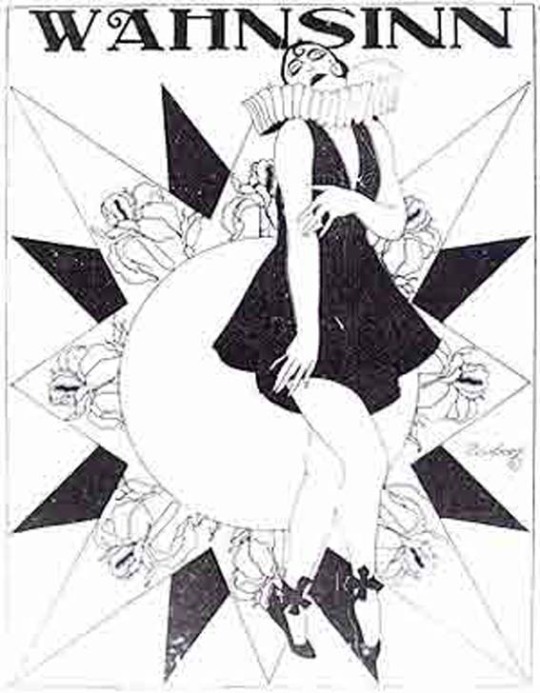

Found a couple of other illustrations advertising Wahnsinn, as well as the original photo of dancer Grit Hegesa they used for the posters. There are snippets of various reviews and other articles concerning the film on this site (in German). Interesting stuff.
#wahnsinn#grit hegesa#conrad veidt#gussy holl#the plot seems quite curious#someone get a tardis and bring this back with all the rest#it's interesting that in the posters you can't really tell if it's a male or a female pierrot figure#and then you have the sexually suggestive orchids...#so much freudian stuff going on here#also interesting that they seemed to have used the term 'sensation film' to describe the style#i'm guessing most films of that type would be classed as horror films now
4 notes
·
View notes
Text
prompt: ssm20d27 // symptoms
summary: the amalgamation of pinks and reds and blues of the sky amplify the resounding warmth of her eyes—green as the first buds of spring—and, he thinks, it is a shame that she is blissfully unaware that she is the cure for the human condition.
note: oops i’m a little late but here’s a little semi-introspective piece; you can also find it on ao3
there is something strangely calming about walking this path home; the remnants of summer are presented by an ensemble cast of hidden cicadas humming a harmonious melody that masks the sounds of yellowing and reddening leaves drifting through the air before gravity takes its toll and tugs it to the earth.
beside him, sakura seems to have stumbled upon the pitch set by the cicadas and she hums a companion piece. her eyes shut momentarily, a smile stretching across her features, and she extends her arms overhead. she expels a contented sigh as her joints crack to release hours of her lengthy workload in this single motion before her eyes gravitate to meet his. he resists the urge to bring his fingers up to poke at her forehead and drop a kiss at the same spot to secure the adoration he holds for her.
as if she can hear his thoughts, a deeper crinkling sets in the corner of her eyes and she exhales a soft, shy laugh. she steps closer and nudges his side with her elbow; the scent of the antimicrobial soap used at the hospital and the peach of her shampoo permeates the air around him. “i like you like this,” she murmurs. “i told you it suits you.”
he cannot discern whether she’s speaking of the film of color from the setting sun that bathes them or of the peace that the end of the war has brought him. she doesn’t comment, but he thinks it may be all of the above.
in a different life, he would have pulled her close and whispered that there is nothing in this world that suits him better than her, that the light she exudes fills the holes that the pains of his past have created. in this life, he settles for teasingly pushing the flesh of his palm to her face and gently nudging her away, countering, “you like me anyway.”
she swats at his hand, nose scrunching in not-quite disagreement, and hums a note that the cicadas compliment. “i heard it was sweltering hot today. did you manage to put aside some time from your busy schedule to water my plants?” though her eyes have shifted forward, he catches the goading undertones of her question.
his eyes narrow, though he has found that perhaps house-husband is the best term to describe him. while her bones carry the weight of her principal role as the head of konoha general hospital, his bones carry the responsibility of household chores and, more recently, indulging his green thumb.
it started with a few herbs some time after his return from his journey after the war. the counter space in the compact apartment sakura kept—really, only because it was near the hospital and a small strip of restaurants that had saved her more than she is comfortable with saying from suffering through her dismal cooking—had slowly become filled with them to help save them from her aforementioned dismal cooking and, after his interest was piqued by discovering his ability to provide thriving conditions for herbs, there was no stopping the rest of the produce that had eventually followed suit. one too many bouts of gnats floating throughout the already minuscule apartment had led to sakura, feelings be damned, to come a hair-width away from throwing him and his cherry and heirloom tomato sproutlings out, so they found a compromise.
he adjusts his eyes to stare up ahead, where their house lies in the horizon. if he stares long enough, his vision focuses on the towering white structure behind it. sasuke, possessor of the eternal mangekyou sharingan and bestowed to carry the weight of the rinnegan, if left to his own devices, has been known to have focused his energy upon that disconnected greenhouse on the outskirts of their land. admittedly, he might have been committing more time to getting the greenhouse ready, but that is only because winter is drawing near and his wife has forbidden him from growing his produce within the confines of their living space.
this, he can admit, is somewhat unfair because while he cultivated his produce, she developed a love for indoor plants, which have somehow gotten a hold of almost every single surface in their home. well, he acquiesces, at least it is one more thing they can chat about.
though his eyes hold great power, she is the possessor of the ability to read his actions, even when he is not in her immediate line of sight, so he is careful to hide the roll of his eyes. “your plants are too peculiar. ‘tap water makes me unhappy. why did you change the temperature? my leaves are going to brown and shrivel up because you’re so cruel to me’,” he responds in a mocking voice. “mine would be happy rooting on concrete if they had to.”
she snorts. he doesn’t have a clear view, but he can tell her eyes are sparkling. “that’s because mine have class, sasuke-kun, something you obviously know nothing about.” he thinks that’s rich, coming from her, and he says so, which earns a painful pinch to his side. she hears him mutter a quick, “annoying woman,” at which he hears a croak of laughter.
they greet the comfortable silence and bask in it for a short while as they continue on the worn path home.
this allows his twice-worn eyes to follow the trail a particular leaf takes as the gentle breeze carries it onward. it begins its descent, bending and curling in its path, and he ponders over the thought that it will proceed on its predestined path to rest on the worn earth below until a sudden gust causes it to surge skyward. for a split second, he can almost swear that the cicadas halt their hummings to make way for the sound of the leaves resting on the ground to cry out for their missing brethren.
he is pulled from his musing when his sandaled feet crush a feeble twig. his body slows to a stop and his eyes shift upwards. he doesn’t know what he’s looking for or if he’s looking for anything in particular, but he remembers.
he remembers that the weight of his past sins can find ways of creeping up on him. he remembers sometimes that the law is often unfair; an uncomfortable sensation suddenly perches heavily in his chest when he remembers run-ins with civilians and nin alike who have lost so much—sometimes due to his past sins, sometimes due to the inevitability of the war—and he looks down at himself, a former criminal allowed to roam the world and speak freely with his wife about mundane topics. he remembers that although he stumbled upon gardening as a means of release, the tightening in his chest when everything comes bubbling up is as uncontrollable as the sea. it bursts as guilt that eats away at him, one side feeling every bit of undeserving of the happiness he’s finally allowed into his life, the other feeling indescribably ashamed that he has allowed happiness to take up so much room that the memory of the past that have been pushed to the borders of his mind.
wanderlust, he thinks, isn’t embedded in his bones for reasons of being incapable of rooting himself to one spot, rather it’s been embedded in his bones by the persistent reminders of the voices inside of his head to remember.
beside him, sakura seems to sense his contemplation. he stares down and watches her feet carry her until she is stopped right in front of him. he lifts his gaze so that their eyes meet once again, and the soft, understanding smile she presents rings throughout his entire being. she brings her hand up to brush the overgrown hairs that cover his left eye before she slides her fingers down to rest on his chest. he reaches out to grip her white coat; the hammering of his heart against the confines of his lungs slows to a lull. “shall i prepare your travel cloak?” she asks.
the amalgamation of pinks and reds and blues of the sky amplify the resounding warmth of her eyes—green as the first buds of spring—and, he thinks, it is a shame that she is blissfully unaware that she is the cure for the human condition.
he shuts his eyes and draws her close until their foreheads are joined. he breathes her scent and it’s times like this that he wishes the sharingan was capable of memorizing the sweetness that is her, before he presses his lips where it was once connected to his forehead. against her skin, he whispers, “come with me.”
33 notes
·
View notes
Photo
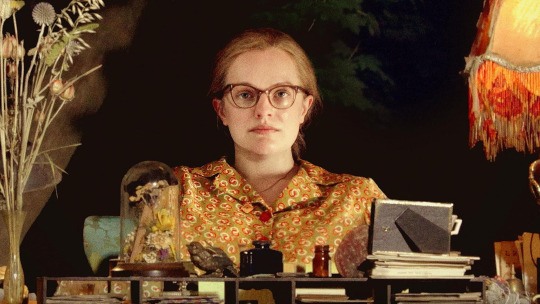
Writer’s Block.
Shirley director Josephine Decker talks to Ella Kemp about novelist Shirley Jackson’s aspirational qualities, Elisabeth Moss’s voice, and the Pixar film that changed everything for her.
Actor, director, writer and editor Josephine Decker has done for American cinema what Alice did for Wonderland. She burst onto the landscape and turned everything inside out, tunneling further into new worlds and disrupting the rules of everyone living there.
With four features to her name so far, Decker has fast become a leading voice in independent American cinema. There was the psychological thriller Butter on the Latch (2013), the erotic fever dream Thou Wast Mild And Lovely (2014), and the hurricane of a coming-of-ager, Madeline’s Madeline (2018). Now with Shirley, Decker turns to the biopic—but this is no paint-by-numbers adaptation of someone’s Wikipedia page. The script, written by Sarah Gubbins (I Love Dick) is adapted from the novel by Susan Scarf Merrell. Some of Shirley is true, some not.
Shirley casts Elisabeth Moss as the eponymous horror author, Shirley Jackson, whose famously disturbing 1948 short story The Lottery caused a sensation when it was first published in the New Yorker. Michael Stuhlbarg appears alongside Moss as Jackson’s professor husband Stanley Edgar Hyman, with Odessa Young and Logan Lerman as Rose and Fred Nemser, academic newlyweds who come to stay in Shirley and Stanley’s gothic home for a spell, while Shirley is wrestling with how to write her (very real) second novel, Hangsaman.
These actors matter, as the first couple—the Hollywood household names—welcome the second pair—fresh-faced rising stars—into their dangerous orbit of wordy brilliance and ruthless scrutiny. The results, knotty, seductive and disorienting, are electric.
Produced by Christine Vachon and Martin Scorsese, Shirley carries hints of Decker’s background in performance art, particularly in Moss’s highly physical performance. Film nuts are still getting to grips with Decker’s singular style, but once you’re in, there’s no way of climbing back out. “Decker finds a way to embody the strange, insoluble, unnerving energy of Jackson’s prose in a film that fittingly always seems to be building to a catastrophic rupture,” writes Jake Cole.
“I am ready to declare her one of the best modern filmmakers,” writes Letterboxd member Brian Formo, while Vshefali praises how “Josephine Decker is able to paint a picture of the inside of a woman’s brain so beautifully”. It’s true: Decker is concerned with what makes us tick, but also how the mechanics of that ticking work when nobody’s looking, when everything else has moved on and all that you’re left with are your own loud thoughts.
If you’re based in the US, you can watch Shirley via our virtual screening room—we’re donating 100 percent of our proceeds to Firelight Media.
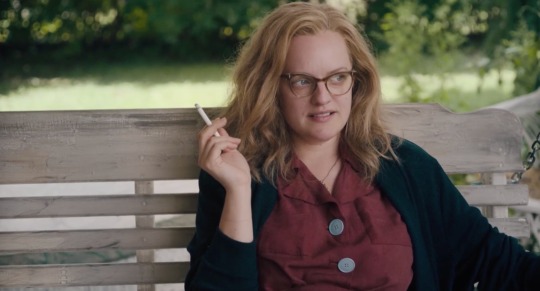
Elisabeth Moss as Shirley Jackson in ‘Shirley’.
In the adaptation from the novel, what key elements did you and Sarah Gubbins want to remain true in terms of Shirley Jackson’s story?
Josephine Decker: We were just really interested in making sure these characters felt like full, rounded individuals. For Shirley and Rose, it was about how they met and entwined. We wanted to really feel their separateness and their togetherness. We spent the most time on how to allow you to really feel each of them deeply, because it’s a hard thing to have a dual-protagonist movie.
What was it about Shirley Jackson that attracted you to her?
I came on after it was already scripted. The character is just so witty, and kind of cruel, and complicated and messy. I had loved Sarah’s work on I Love Dick, I thought that Kathryn Hahn’s performance was one of the great female performances of the last twenty years. She just writes such great characters, so it was exciting to be able to dive into the Shirley that she had created. Also, the real Shirley Jackson is such a complicated and fascinating person—I was and am obsessed with her writing. She does in writing a thing that I’m trying to do in cinema, so it was exciting to get to know her work that well.
What things in her work would you like to emulate?
You fall from a real place into an imaginary place without really realising it. She’s very good at sliding you into the character’s mind. It’s a witchy thing that makes her writing feel really exciting, that I haven’t seen that much on screen. I feel like in American cinema there’s this clear line between reality and what’s in your mind, but I think with Shirley that line is very unclear. That’s something I love, that I really pursue in my work and get excited by.
I definitely felt that with Madeline’s Madeline as well, it all feels very slippery.
Totally.
Shirley is the first feature you’ve directed from another person’s script. How was that experience?
It took me a minute to get inside of the world. I’m generally pretty process-oriented, but this film was different. There’s usually a thing that happens as you’re writing, I find I’m writing as an excuse to get the words that are in my head out. So to come from words and try to see the images was a very different experience, but also really exciting. With Sarah’s writing, it was interesting how the space was so important, this house was such a major character in the film. Because it’s such a dialogue-driven script, I worked a lot with the actors in rehearsals. I guess maybe some directors would tell you what to do, and you would start, and you would do that, but I didn’t even realise that would have been an option, so I was like, “Well, we have to make the blocking together” because I was also really adamant that I didn’t want the dialogue to be static.
It was important to me to sculpt some of the dialogue scenes into movement scenes. It was fun to find the dance of the film and allow the actors to choose their own way through the dialogue. They’re all such geniuses. When we would do rehearsals with Lizzie and Michael, it was so fast, they’re so good at working things out themselves. It was just exciting to let them find their own space and then obviously weigh in when I felt like an outside eye was helpful. I feel like a lot of what I’m realising as a director is if you choose the right collaborators, it’s just about getting out of the way!
How would you describe the relationship between Shirley and Rose? It feels thorny—it reminded me of Phantom Thread in terms of the toxicity.
Generally, Shirley’s own work is about these two female characters who are really different—one is a dark, misanthropic genius, but angry, and the other one is a very light-hearted open spirit who is generous and good at baking and making men happy. I think in her biography there was this idea that these two kinds of women were different aspects of Shirley’s own mind, that she was like both of them. So it was about how different Shirley and Rose are at the beginning, and then that their coming together is such a collision, but then they discover they have a lot to learn from each other and they’re more similar than they realized.
It was about making sure we could understand their motivations. Especially Rose—she could have been a lighter, less-complex character, but I think I felt really committed, and Odessa did an incredible job, to make her a really full human with her own aspirations. And in the novel too, she has her own world going on. So it’s about making sure her goals are still clear, and then that by the end of the film maybe she has new goals, or maybe she realizes that everything she’d been tidying up her life to get in order—get a husband, have a baby—are maybe a little bit at odds with the deeper thing she’s searching for. But they are really slippery characters.
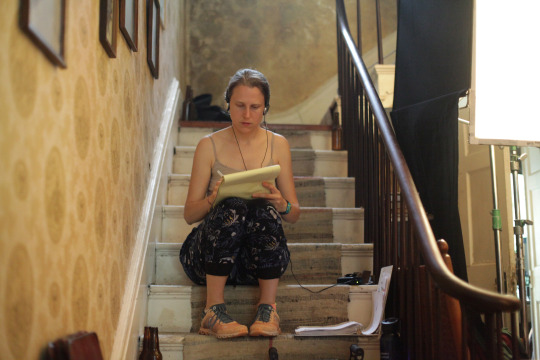
Josephine Decker on the set used for the Jackson-Hyman house in ‘Shirley’.
You mentioned the importance of the house. I spoke to Kitty Green recently about The Assistant and you share the same composer, Tamar-kali, and sound designer, Leslie Shatz, on your films. Both scores are amazing; on Shirley I’m thinking of the cellos and the violins but then also the creaky floorboards in the sound design. How do you think music and sound help build this world?
They’re huge tools. I always think sound design can really bring a new element, especially to a film like this where there’s a slide into a surreal realm, into the mind sometimes. So finding a sound that hints that the things you’re witnessing are a little unreal is exciting. Leslie did a lot of playing. He jokes that when we first met I told him to go to town, and then he just went to town and was like, “I hope I went to the right town!” We had a lot of fun. We tried to really use sounds that weren’t too electronic, stuff that felt like it could have been made with the sound effects that would have been available then. Sound is a huge storyteller, I think it’s more impactful than film. I also think Lizzie’s voice is a train that pushes you through the film, in that you understand where she is with the writing by how confident or how confused that voice is.
What was the first film that made you want to be a filmmaker?
Monsters Inc., that one’s easy. I had a real revelation in college while watching it. I’d seen it before, it was my second time, but I just laughed like a little baby. I just have so much fun in these Pixar movies, my best friend in college was watching with me and I was giggling and sitting four feet from the television, and she was just like, “You really like this and I think you should do this and this would be a combination of everything you’ve been doing.” It was helpful to have a friend there to tell me that. I haven’t started making movies like that yet, but maybe someday. My next movie [The Sky Is Everywhere] is a YA film, so if I just keep going younger and younger…
Related content
A list of Shirley Jackson-related titles on Letterboxd.
Eve’s lists of films Written by Women and Directed by Women.
‘Shirley’ is available on Hulu and other streaming services now. With thanks to NEON.
#shirley jackson#josephine decker#madeline's madeline#female filmmaker#female director#directed by women#52 films#52 films by women#girls on tops tees#ella kemp#writers on film#novelist#new yorker#letterboxd
5 notes
·
View notes
Text
Texture & Pattern

Vincent Van Gogh
Texture
Texture refers to the surface quality of an object. Texture is an important component of a successful composition because it appeals to our sense of touch. This is true even when we do not actually touch an object our memories provide the sensory reaction or sensation of what that object might fell like if touched. Texture becomes one more element for us to think about when we look at any composition.
In effect, the various light and dark patterns of different textures are visual clues for us to enjoy the textures vicariously. Of course all objects have some surface quality even if it is only unrelieved smooth flatness. The element of texture is illustrated in art when an artist purposely exploits contrast and surfaces to provide visual interest.
There are two categories of artistic texture - tactile and visual (actual and illusion).

Roy Litchenstien, cubist still life, oil on canvas, 1974

AIGA poster
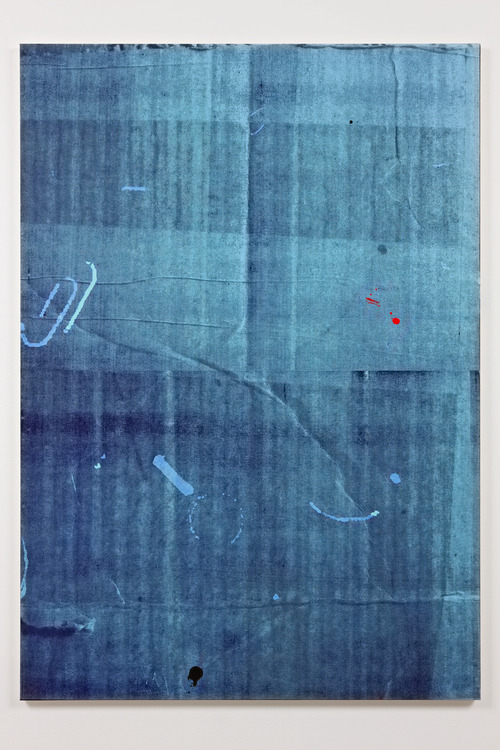
Alex Hubbard, SK 23, Silkscreen print, oil and enamel on canvas /wooden stretcher, 72.05 x 50 x 1.57", 2009
Tactile Texture
Tactile texture is texture that can actually be touched. In painting texture describes the uneven paint surface. In graphic design texture can add a sense of reality “realness”. Things that seem more real to life often result in a more emotional response from the viewer, and can in turn be more memorable.
Architecture and sculpture employ actual material and have what is called tactile texture – texture that can actually be felt. In painting the same term describes an uneven paint surface, when an artist uses the paint (a technique called impasto) so that a rough, three dimensional paint surface results.
Consider Vincent van Gogh‘s painting from the top of this lesson. Texture is not just created through the pattern of short brushstrokes, but it is also created through the ridges and phrased edges of the paint strokes that are obvious to the viewers eye. The painting is revealing what it truly is– Paint on surface– Not just an illusion. Same goes for Thiebaud’s painting below:

Wayne Thiebaud, “Boston Cremes”, 1962
As we’ve been exploring through this class a traditional idea of a collage is gluing down pieces of colored and textured papers cloth and other materials. Collage moved from a folk art to A fine art in the 20th century. Collage allows us to Play with compositional arrangements more easily by cutting reshaping and altering images and moving them around before pasting them down.
Anne Ryan worked mainly in collages of cloth. Her closet show various bits of cloth and contrasting leaves and textures interspersed with some scraps of printer paper. The light and dark pattern is interesting but her attention is mostly drawn to the contrast of tactile textures. See below:

Anne Ryan
VISUAL TEXTURE:
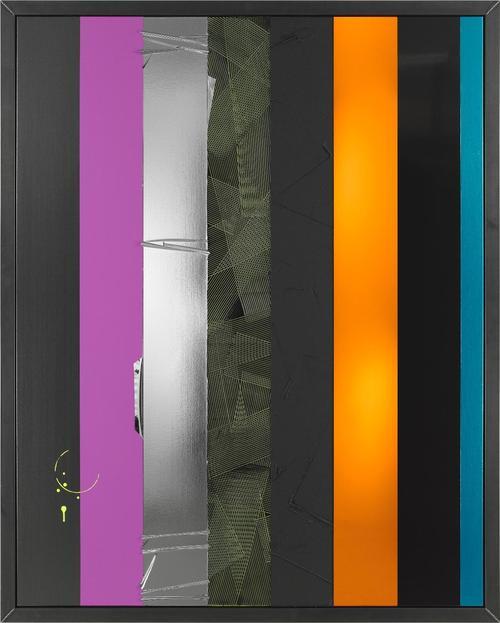
Anslem Reyle, Untitled, mixed media on canvas, metal frame, 256x205cm, 2007

Texture can also be created through the illusion of texture. By reproducing the color and value of patterns of familiar textures, artists can encourage us to see textures where none actually exist. Visual texture carries the same visual punch as Tactile texture. Visual texture can also be created with photography, used on its own or as a filler for a shape, foreground or background.
In painting artist can create the impression of texture on a flat smooth paint surface. By reproducing the color and value patterns of familiar textures painters can encourage us to see textures where none actually exist. This is called visual texture. The impression of texture is purely visual – an illusion - it cannot be felt or enjoyed by touch. It is only suggested to her eyes. Artists use this as a way to stimulate the composition and move your eye around the surface. Various textures can convincingly be re-created. Visual texture can be an interesting design element even without subject matter or any pictorial reference.

Max Ernst, Surrealist painter
The ultimate point in portraying visual texture is called trompe l’oeil the French term meaning to for the eye. This style is commonly defined as deceptive painting. In trompe l’oeil the objects in sharp focus are delineated with meticulous care. The artist copies the exact visual color and value pattern of each surface. A deception occurs because the appearance of objects is so skillfully reproduce that we are momentarily fooled. We look closer, even though our rational brain identifies the image as a paining and not the actual object.
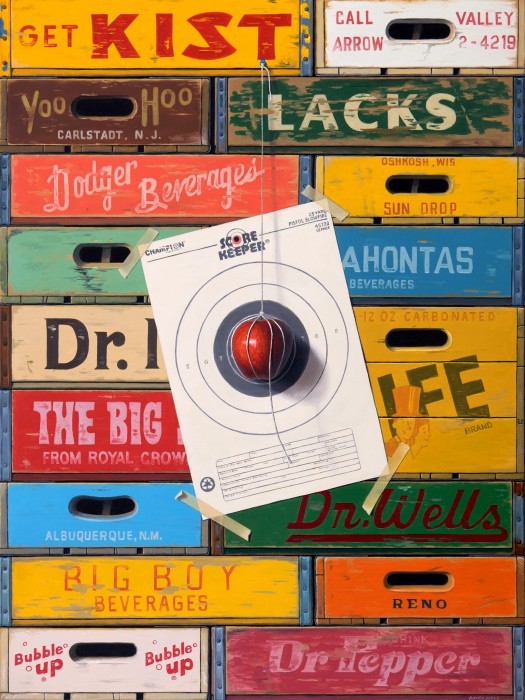
Robert C. Jackson
20th century artistic emphasis has been on abstraction, distortions, and non-objective patterns. But in much art the trompe l’oeil tradition continues And is not limited to painting. Marilyn Levine works in ceramics as seen in “Thom’s Jacket” from 1989 below. it is incredibly realistic but again it’s made of ceramics and is an illusion.
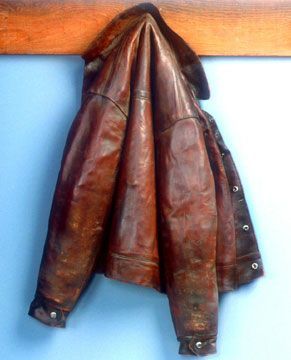
Texture and Pattern
It would be difficult to draw a straight line between texture and pattern. We immediately associate the word pattern with printed fabrics such as plaid, stripes, polkadots and floral patterns. Pattern is usually defined as a repetitive design, with the same motif appearing again and again. texture, too, often repeats, but it’s variations usually do not involve such perfect regularity. The difference in the two terms is admittedly slight. material such as burlap would be identified right readily as a tactile texture. Yet the surface design is repetitive enough that a photograph of burlap could be quite a pattern. Once a visual texture is represented within the confines of a space or shape it often may look flat to our eyes and take on the characteristics of a pattern.The essential distinction between texture and pattern seems to be whether the surface arouses our sense of touch or merely provides designs appealing to the eye. While every texture makes a sort of pattern, not every pattern could be considered a texture.

David Lynch, Twin Peaks, film still, 1990
Pattern is a great way to distinguish between areas of contrast on an image and compositions.

Barry McGee
Pattern inspiration
There are many artists, designers, and architects that employ beautiful, intricate and complex patterns. I’ve compiled the “best of” collection to inspire you for your Patterns Assignment. Each image is accompanied by a short description of the artist/designer/architect/etc., and each name is hyper-linked to their website (if applicable), so you can get more details on the people that inspire you the most.
Sol LeWitt, whose deceptively simple geometric sculptures and drawings and ecstatically colored and jazzy wall paintings established him as a lodestar of modern American art.
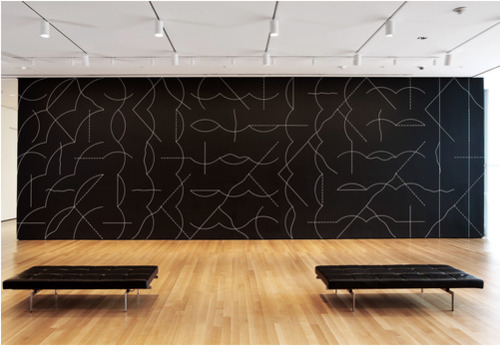
Installation view of Sol LeWitt’s Wall Drawing #260 at The Museum of Modern Art, 2008. Sol LeWitt. Wall Drawing #260. 1975. Chalk on painted wall, dimensions variable. Gift of an anonymous donor.© 2008 Sol LeWitt/Artists Rights Society (ARS), New York. Photo © Jason Mandella

Sol LeWitt, Drawing 915.013

Sol LeWitt, Wall Drawing #260
Le Corbusier (born Charles-Édouard Jeannere) was a Swiss architect, designer, urbanist, writer and painter, famous for being one of the pioneers of what now is called Modern architecture or the International style.



Bridget Riley British painter and designer. She shows a complete mastery of the effects characteristic of Op art, particularly subtle variations in size, shape, or placement of serialized units in an overall pattern.
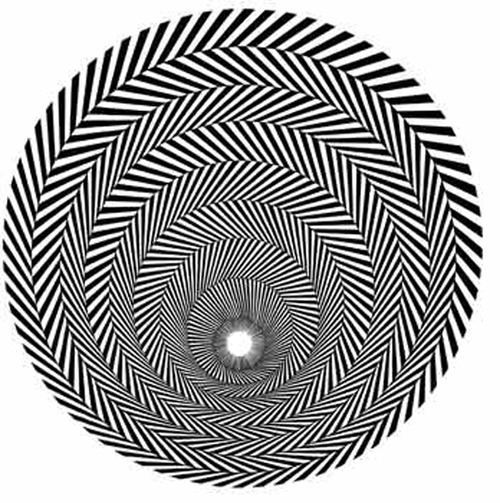
Bridget Riley,
Blaze 1, 1962
, Emulsion on Hardboard, 43x43 in

Bridget Riley,
Descending, 1965,
Emulsion on Hardboard, 36x36 in.

Bridget Riley, Parade I, 1999-2000, oil on linen, 89 5/8 x 206 ½ in / 227.7 x 524.5 cm
Robert Zakanitch paints lace and embroidery. His patterns are beautiful and speak to the shifting instability of texture.

Blue Birds (Lace Series) oil on panel, 2001.

Flowers doily painting. Robert Zakanitch
Take a close look at the figure-ground relationship in the works by M.C. Escher, who is most known for his impossible architecture and landscape drawings, showcasing his play on perspective and point of view to create structures which ultimately cannot exist. I have always been more captivated by Escher’s pattern works. His ability to create a fluid and seamless plane of repeated images fitting perfectly together is both unrivaled and inspiring.

Bird/Fish, June 1938, Drawing, 228 x 243 mm (9 x 9 5/8’’)

Smaller and smaller, drawing 1956.

Horseman, June 1946, Drawing, 213 x 214 mm (8 3/8 x 8 3/8’’)
Another great example of pattern can be seen in Islamic art & architecture.



Japanese paper is another beautiful source for pattern inspiration.

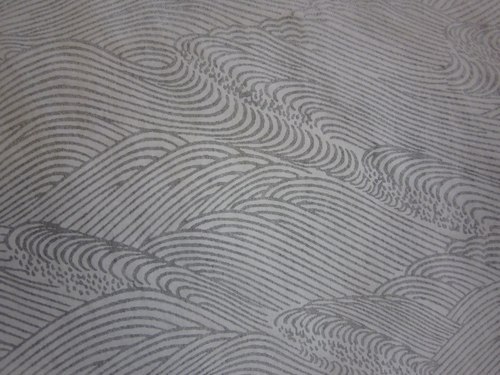
Navajo Weaving has a unique look, drawing from its Spanish and Pueblo history and nomadic way of life.



Traditional Amish Quilts lend patterns that have beauty in simplicity. Modern quilt artists are using black with solid colors and discovering the beauty in such basic designs.
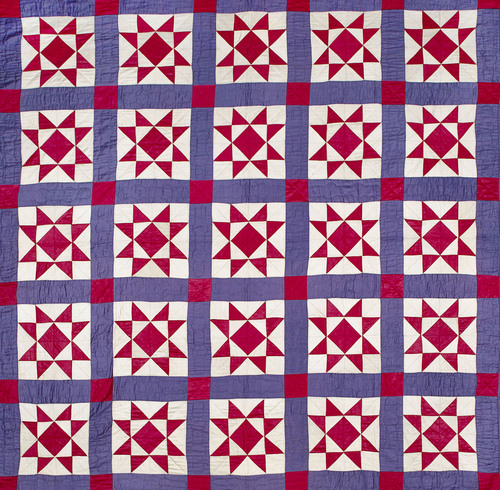


Stephen Westfall











African Textiles are infused with spiritual and mythical meaning in the actual pattern designs on the cloth. Specific patterns are also used as a form of identity with each tribe having their own unique patterns.
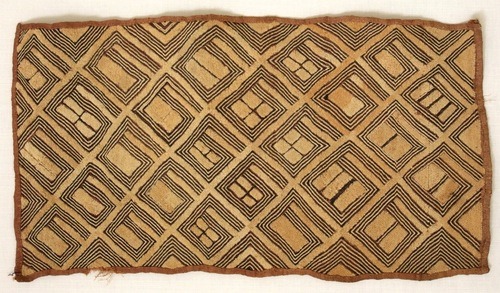
A man’s cloth of the Asante peoples, Ghana, c. 1960. Photo: E. G. Schempf.

A man’s cloth of the Asante peoples, Ghana, c. 1960. Photo: E. G. Schempf.

Kente Cloth, Woven by men on a narrow loom. Found among the Asante in Ghana and associated with royalty. Both silk and cotton are used.
El Antasui

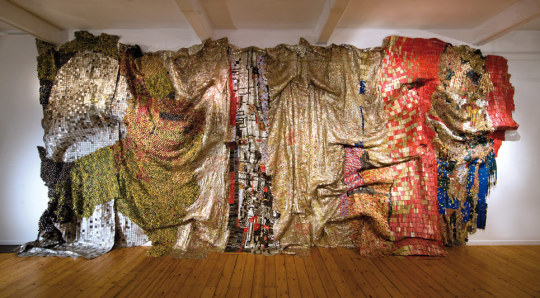
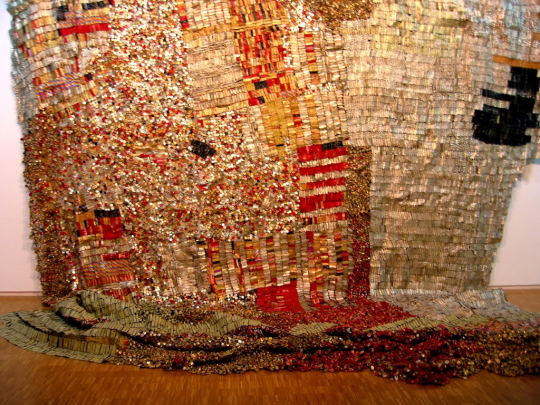

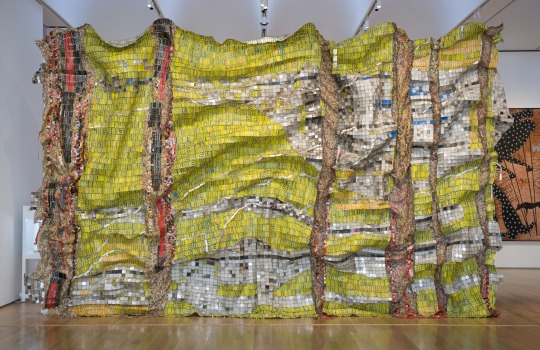
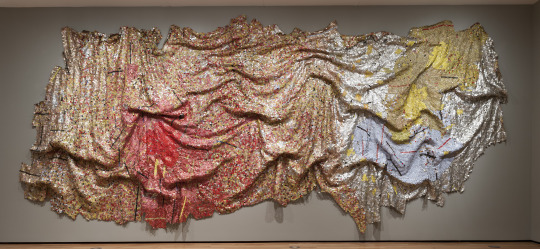

Takashi Murakami



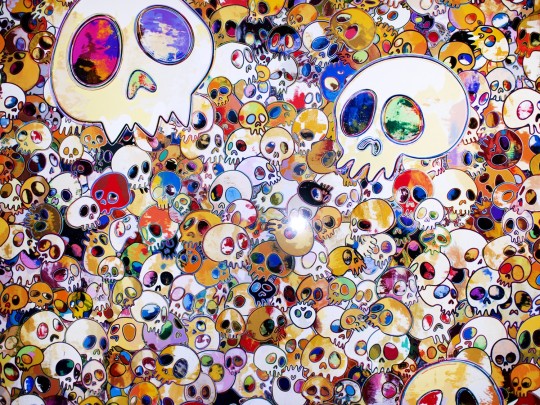

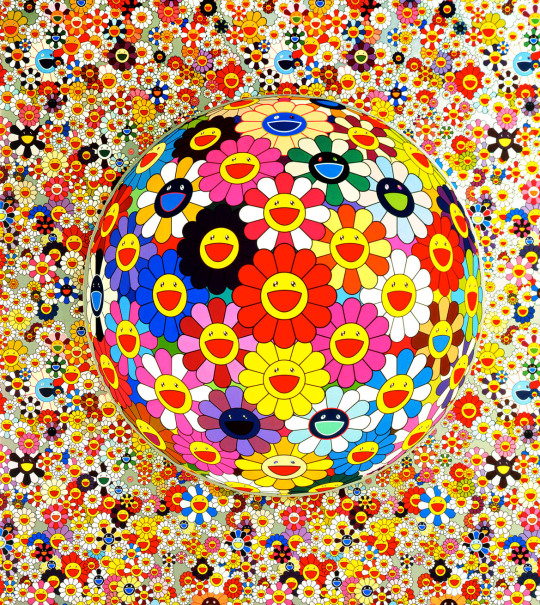
Polly Apfelbaum
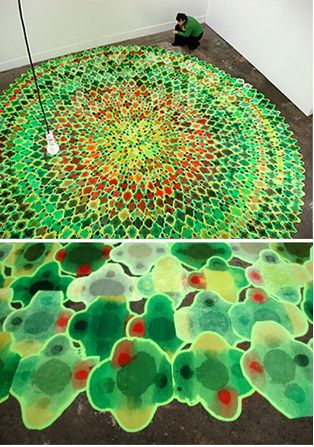
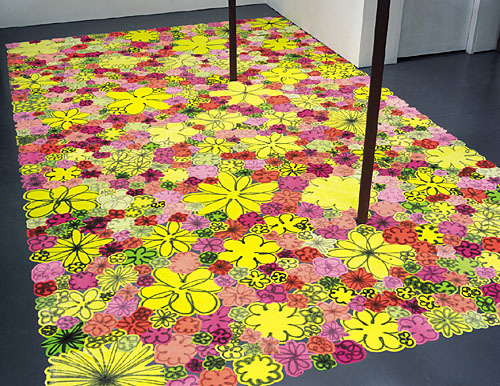
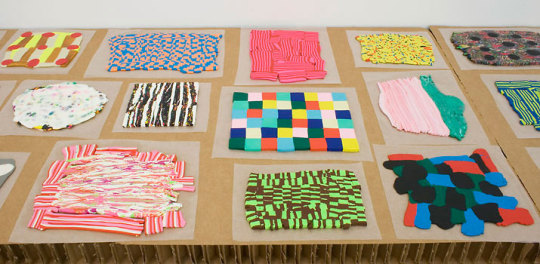
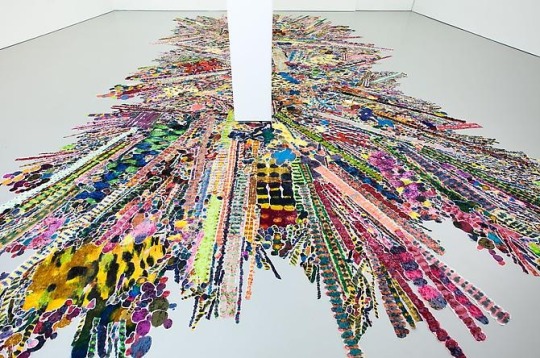






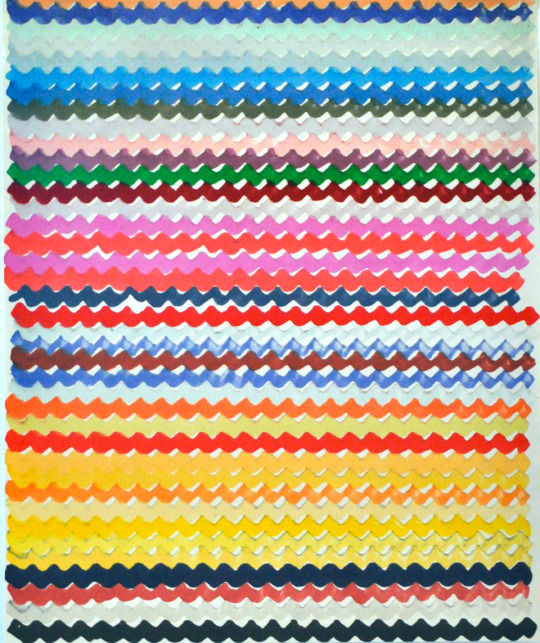




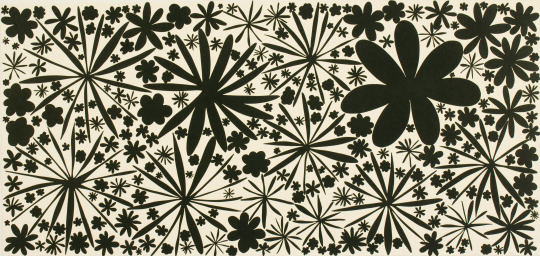
Marc Handelman
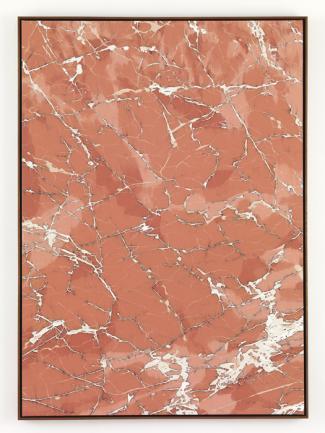
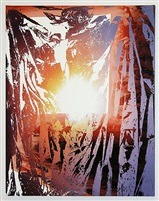



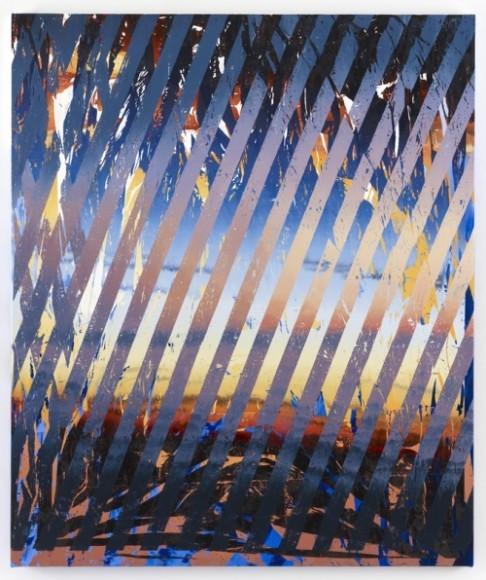
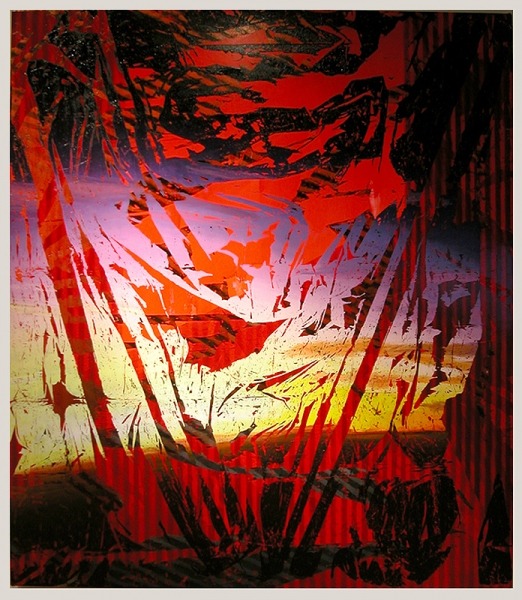


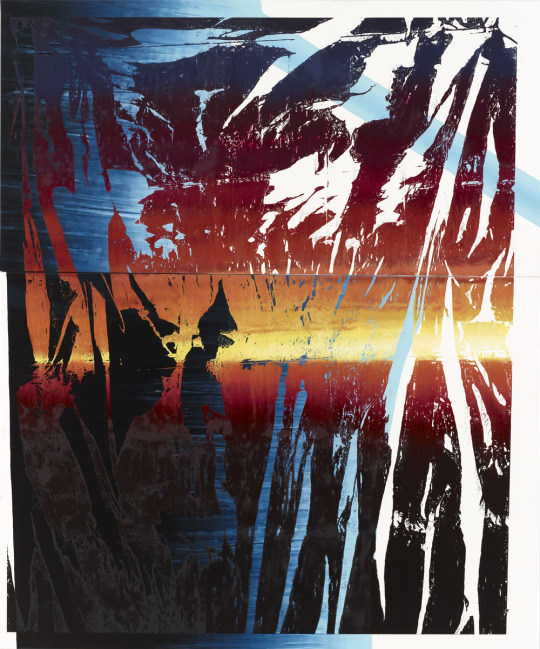



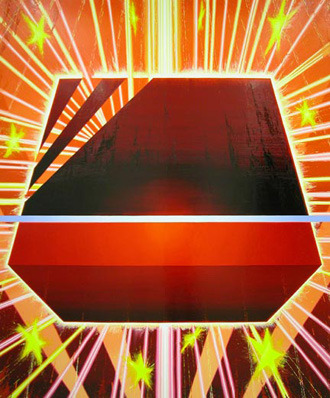


Katherine Bernhardt



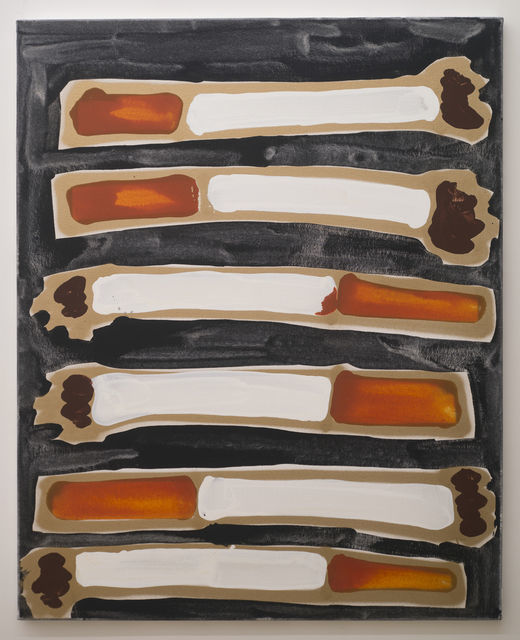

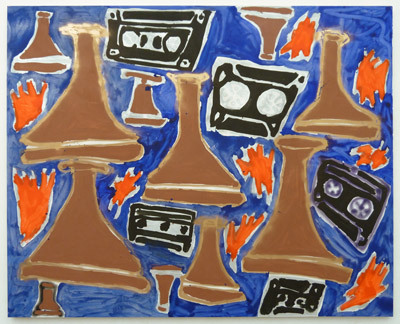



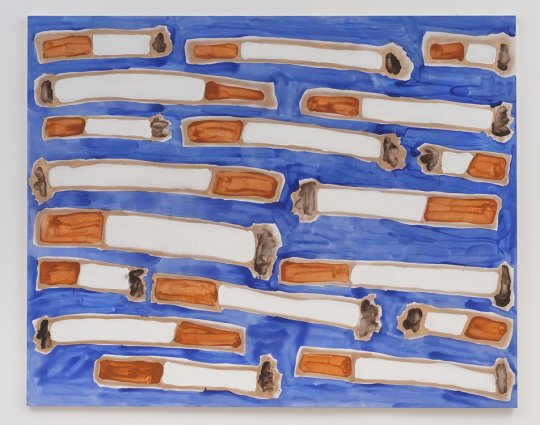


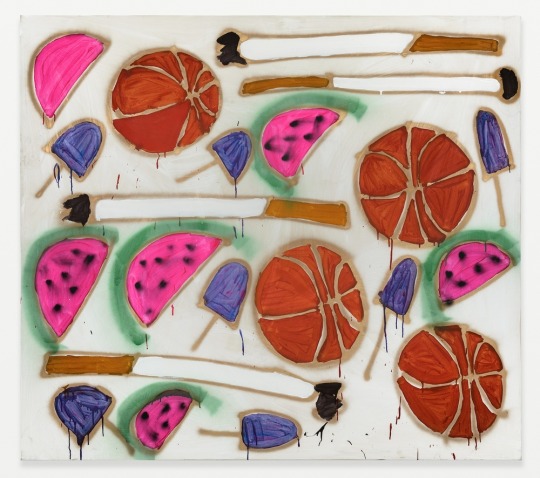

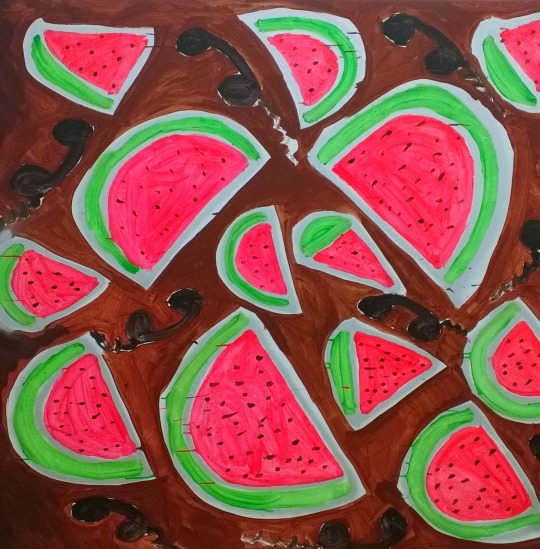

Texture/Pattern Project
1. In your sketch book draw out at least 4-5 distinct textures or patterns. Play and experiment. Look at the textures you might have around the house. How could you translate them onto a two dimensional surface? Draw each texture or pattern in a thumbnail shape (no less than a 1″x1″ square) this that you do not have to fill an entire page.
2. Once you have created your patterns and textures you will find an image that is of interest to you from a magazine, newspaper, picture, image you print out, etc.
3. You are going to recreate this image on a piece of bristol paper (if you don’t have access to your bristol you can use a piece of computer paper). You will recreate this image using the textures and patterns you created with your thumb nails. Each texture or pattern you use must replace a color/value in your original image. You must choose your textures or patterns appropriately to convincingly recreate the value changes in the image with only a texture or pattern. Therefore you may want to tweak your original texture and pattern designs to account for apparent value changes in you image. If there is a darker area on your original image, you might want to make your pattern more condensed and smaller. If there is a lighter area on your original image, you might want to make the pattern larger and less condensed.
Also depending on your image you may need to create a few more textures or patterns. (Textures or patterns can also be specific to the image, for example: if wood is representing in your image then you may want to create a wood pattern for these areas of your image - you do not have to though.)
4. Your recreated image will be in back and white using the different patterns and textures to distinguish the areas of value. This project should be done in micron pen and sharpie. All colors and values in your image must be translated to a texture or pattern.
Project examples

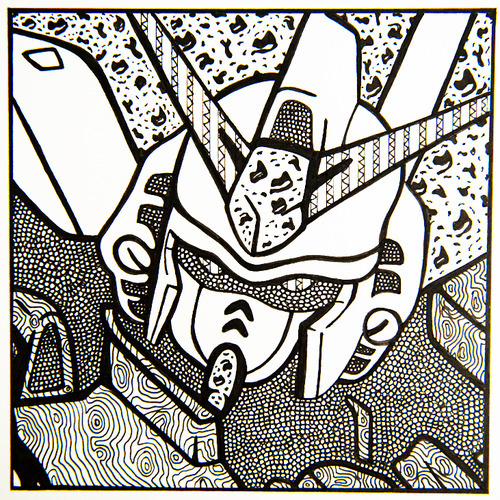
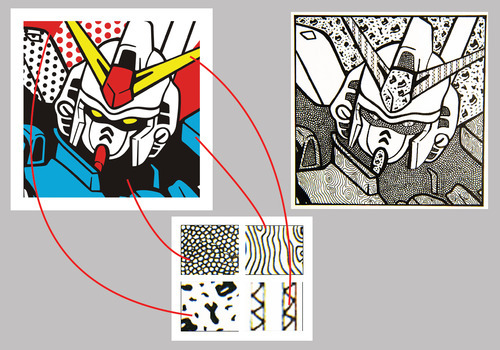
Final Product
In the end you should have 3 part for this project.
1. The original image in presentation format on a piece of bristol paper.
2. Thumb nail sketches.
3.The final recreated image (on bristol paper) with all values converted to textures and patterns.
*Again if you do not have access to your bristol paper you may use computer paper.

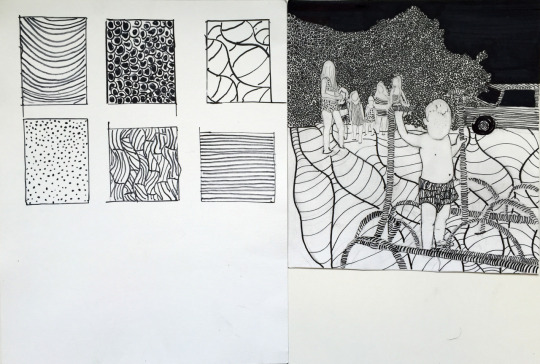

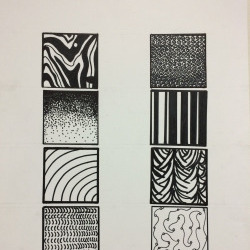






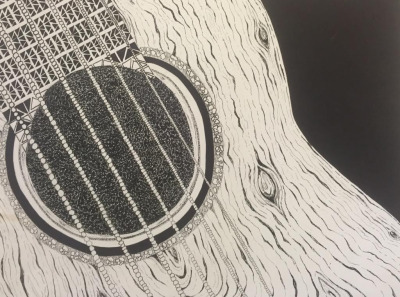
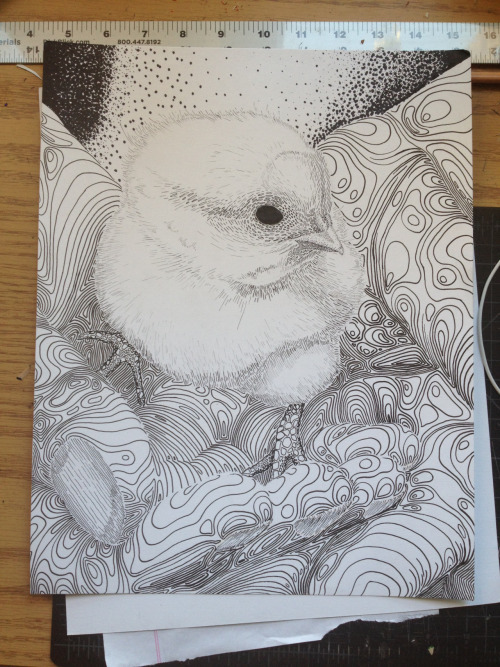
8 notes
·
View notes
Text
Jonathan Demme’s ‘A Master Builder’ and the Elusive Magic of Bringing Stage to Screen by Tina Hassannia
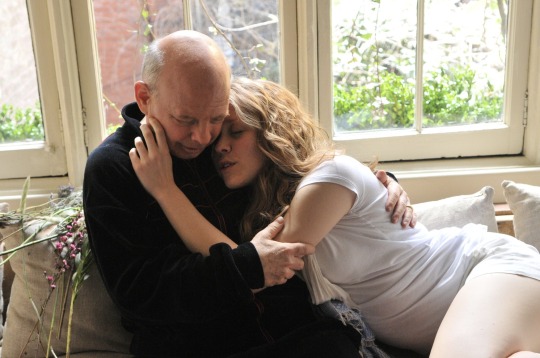
Criterion’s three-film box-set of the works of Wallace Shawn and Andre Gregory—My Dinner With Andre, Uncle Vanya, and A Master Builder—features several supplements, including an interview between the theater artists and writer Fran Lebowitz. She makes a frank confession: “I don’t like watching theater.” Gregory, a man who’s spent his entire life in the theater, says he feels the same way.
Lebowitz explains that she loves to be drawn into a good film or novel, but, with the exception of Shawn’s work, she’s never experienced the same with theater. She’s not alone. While theater may not exactly be a dying art form, it was long ago upstaged by cinema and television as our de-facto entertainment, and our appreciation for it has dwindled in kind. Theater requires us to suspend disbelief that we’re watching mere make believe, more forcefully than film, which benefits from a metaphysical distance from the viewer. Why sit through 2-3 hours of physical artifice just to see actors move through the spectrum of human emotion when there are so many easier and supposedly better options?
Those lucky enough to have witnessed really good theater know this a philistine’s line of thinking, but even so, its cultural relevance is tightly bound to its usurper, cinema: film adaptations of plays are usually better known than famous productions. (Consider the populist understanding of A Streetcar Named Desire without Marlon Brando—it doesn’t exist.) But adaptations are in essence, films, not theater. Transmitting the visceral pleasures of actual theater is nigh-impossible. If you’ve ever made the mistake of watching a recorded stage performance, you know you’re missing an essential thing privy to members of the audience. No matter the quality of the performance or camerawork, filming a play cheapens the experience. Theatricality is transmogrified into an over-exaggerated mess onscreen. The chemistry unique to each performer and audience, which gives birth to an atmospheric energy that changes with every performance, is lost.
A Master Builder director Jonathan Demme tries to describe a similar sentiment in another Criterion supplement, an interview between himself, Shawn, Gregory, and critic David Edelstein. Having seen the duo’s final production of A Master Builder —which Demme calls “literally spell-binding” and “very emotionally intense”— the director chronicles in the interview his experience watching Gregory watch the play. Having finished his part as Brovik, Gregory joined the audience, but, according to Demme, appeared to subconsciously direct the performers as if through an “energy field.”
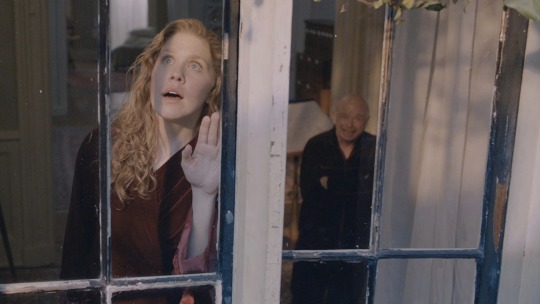
“I remember seeing his face responding to everything that was going on there and feeling the connection,” he says. Edelstein follows up with questions, as what he’s hearing sounds too “woo woo”: Were the performers looking at Gregory? Was he in their peripheral vision? … What, exactly? It’s not Demme’s fault he can’t eloquently explain the phenomenon, because words rarely do the experience of live theatre justice. It’s an inexplicable sensation that can only be experienced to be understood.
Filmmakers sometimes struggle adapting plays for the screen. Those who succeed understand the key differences between the artforms. They preserve the essence of story and drama, the play’s unique blueprint. They subtly reframe the story to be told more visually. And they honor the reality that plays are usually verbose in nature. Results have varied in quality from baffling (August: Osage County) to transcendent (Amadeus). But the outcome is usually more accomplished in the literary appreciation of theatre—say, a modern or unique interpretation of a classic text, like Orson Welles’ Macbeth—than the emulation of that woo-woo theatre magic.
And then there’s Demme. The director took on Shawn and Gregory’s third film collaboration. A Master Builder is dedicated to Louis Malle, who brought to life the actors’ long-form conversation My Dinner With Andre and their modern interpretation of Anton Chekhov’s Uncle Vanya. Demme was a perfect replacement for Malle, as they share a visual intimacy in their work. Demme also benefits from a swirling chain in his aesthetic DNA: an unparalleled gift in recording live performance that sometimes makes you feel like you’re really there, really present, inhaling the performers’ energy.
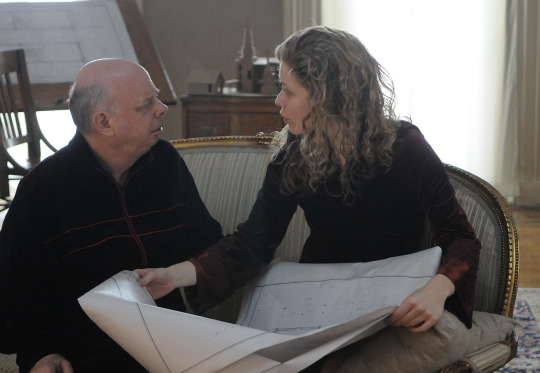
In his concert films, including the masterpiece Stop Making Sense, Demme captures both spectacle and the musicians’ shamanistic force. In Swimming in Cambodia, a kind of filmed play, for lack of a better term, it feels as if you really are watching Spalding Gray’s affecting one-man show. Demme relies on close-ups to get us as close as possible to the performer, but maintains a respectful distance. Instead of trying to direct the performers to be more naturalistic for the screen, he blends himself into their forcefield. Perhaps this is why Demme is able to transform Shawn and Gregory’s take on Henrik Ibsen’s play into something simultaneously cinematic and theatrical. The humanistic, democratic POV that Demme often brings to his work nearly elides his personal perspective, thus allowing the viewer to virtually breathe in the full depth of the performer’s space and energy.
Shawn plays Master Builder Solness, a narcissistic aging architect who won’t allow his associates Brovik (Gregory) and his younger son Ragnar (Jeff Biehl) to build anything on their own. Tensions in Solness’ personal and professional life are a direct consequence of his tight reign over his company. Suddenly a mysterious nymph-like woman named Hilde (Lisa Joyce) visits the Solness estates, and their past history is one of many contradictions the play teasingly weaves into its narrative. Through the course of their labyrinthine conversation, the viewer understands how Solness views his selfish actions, the traumatizing effect they’ve had on his loved ones, and his deceptively innocent explanation, simply imagining his success into existence.
Ibsen’s original The Master Builder is a difficult play to mount and even more trying to comprehend, full of delightful contradictions that produce different interpretations. One understanding—supported by Shawn and Gregory’s modern adaptation—is that Hilde is an imaginary figure in Solness’ death fantasy, a chance for him to reckon with his many mistakes. Shawn and Gregory crystallize Ibsen’s ambiguous magical realism into something more obvious, turning the typically physically robust Solness, who self-deprecates about his inner “trolls,” into someone who actually resembles one. (No offense to Mr. Shawn). It’s clearly intentional. He’s on his deathbed but then suddenly dashes into a spry man upon Hilde’s introduction. Their conversations are all a dream, despite seeming real. Occasionally the film interrupts their garrulous chemistry to show a more liminal headspace that very well could be reality: we hear beeping monitors and frantic nurses trying to save the comatose Solness, but all we see are Demme’s signature mobile establishing shots of trees and the architect’s many buildings.
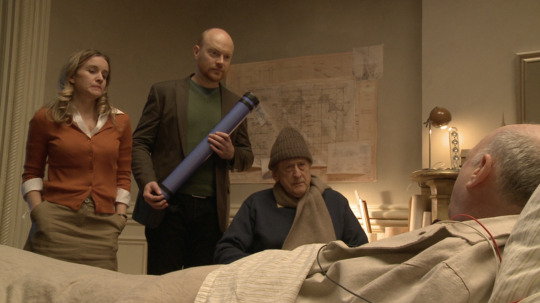
In A Master Builder, Demme gives the actors sufficient room to block their minimal but lustful action. The beautiful interior architecture provides an elegant and visually interesting complement to what is essentially a chamber drama, that most notoriously difficult kind of story to film. Demme toned down the actors’ acting so that it was suitable for the screen, as film tends to capture every minute facial twitch and shift in body language. But the actors retain a good portion of their theatricality, as it’s the play they’d been rehearsing and performing for many years. This is a rare feat in film adaptation: the preservation of theatre’s intensity and magic that piques curiosity in Ibsen’s strange little play.
The Master Builder thrives or dies on the dynamic between the actors who play Solness and Hilde; their immediate palpable chemistry is imperative to intrigue the viewer. So much of the play focuses on these two strangers oversharing personal details, a conversation that delves deeper and deeper into personal, vulnerable territory. It only makes sense for the viewer to know why these two people seemed “destined” to meet again, why we want to hear them speak at length, and with such intensity. The use of close-ups to capture Hilde’s wild-eyed fascination for her master builder, her hunger evident through body language, all seems outlandish for a long while until she reveals details of their shared history that Solness conveniently forgot. It sounds tedious but the pace is dramatic given the ugliness of their past. Until then, the viewer remains bewildered why a young, ambitious and confident woman would ever be so openly smitten by a troll.
Shawn and Gregory downplay an integral component of the story, however, to suit their “death fantasy” interpretation, for better or worse: in Ibsen’s original, it is pretty obvious Solness physically handled the 12-year-old Hilde in some inappropriate manner (according to her, he, all but a stranger to this child, kissed her on the mouth, called her a princess, and promised to build her a castle in ten years). It’s a conversation that is more grounded in the original and treated more lightly and ambiguously in this version. A practical, psychologically grounded interpretation of the original might conclude Hilde’s pursuit of her abuser is a trauma bond she never recovered from, with the “princess in the castle” fantasy carrying her through adolescence into young adulthood and here we are, ten years to the day, Hilde having found her master builder at last, so he can deliver on his promise.
But the film suggests a different understanding: here, Hilde is not so much a real character with baggage guiding her actions as she is a fantastical figure in Solness’ final reckoning with his id. While Ibsen appears to have written Hilde as something of a wild child (and there is symbolic value pointedly repeated in dialogue about her stay in the Solness residence’s empty “children’s rooms,” her presence also representing Solness’ guilt about his deceased children), Shawn and Gregory’s maximalist interpretation has Hilde literally wearing a childlike outfit. These outlandish aesthetic choices, while more acceptable in theatre, veer into ludicrousness in the subtler frame of the camera, but Demme’s setup elegantly frames it for magical realism—a form that some people have intuited was Ibsen’s real objective with The Master Builder.
One reason why this play remains a lesser produced work by the Norwegian playwright is its baffling complexity. Its many contradictions don’t offer any satisfying interpretation. One way to cut through the bullshit for a theater artist—especially one responsible for bringing it to the masses via film—is to hint heavily at their interpretation without directly spelling it out. That approach works best for two-dimensional, captured film. Otherwise the viewer may find A Master Builder, no matter how refined and well-filmed, an obfuscated maze to walk through. There’s just enough realism to make us question whether or not we are watching reality or a death fantasy. In either case, it’s a fascinating exploration of a narcissistic mind, and a gem of a play granted wider access through the medium of film.

#a master builder#the master builder#wallace shawn#andre gregory#jonathan demme#architecture#Louis Malle#swimming in cambodia#stop making sense#film#independent film#film writing#film essay#fran lebowitz#Oscilloscope Laboratories#O-Scope Labs#Beastie Boys#Adam Yauch#musings
15 notes
·
View notes
Text
Clever Little Things — Part One — David Dobrik x Reader
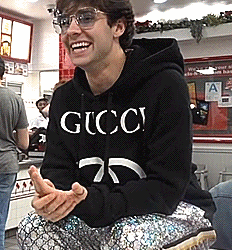
A/N: hey guys so this one’s based off an awesome ask! I’m writing my asks a little slower at this time (and taking sometime away from Datalie until inspo comes back) to ensure better quality. I’m also turning this one into a series. Lemme know if you have any ideas of where you want this story to go. Anywho, thanks for taking the time to read, love ya!!
Masterlist
Summary: You don’t like David, and he plans on changing that.
Anon Asked: Hey !! Love you're writing, nobody ever does my requests so hopefully u can break that pattern :-), can u do a david x reader where it's an enemies to lovers sort of thing, where he's really charming and smug to her and like a huge flirt and she kinda just rolls her eyes and tells him to fuck off (maybe it could be a series??) Thanks !!
——
David fucking Dobrik.
Fuck that guy.
Yeah, you said it. Repeatedly and sometimes out loud. You couldn’t give a fuck about YouTube’s resident golden boy. You have lived in California far too long to be impressed with young, ridiculously wealthy men and their expensive cars. David seemed like a guy who fell face first into a vat of luck and wore humbleness like a cloak, hiding who he was underneath.
You were bound to run into him around Hollywood, your job as a freelance editor had you working with a ton of people in the industry he dominated. You had once preferred working in TV and film, but when a girl named Gabbie reached out to you, getting your info from a colleague, you were yanked into the YouTube world. Gabbie loved your work and had given your name out to all her influencer friends. The calls came rolling in.
Hey, it was a paycheck. These viral sensations actually made bank, and you were getting a more steady source of income from them than you did at any other job you’d worked in the city of angels. It even led to a pretty long contract job at a decent media group. Where you had to attend events and mingle and really learn about the world you were working in. It was mostly good.
But David, he fucking annoyed you. Whether it was hanging all over Instagram models for clout, or holding up the entrance line at a club to take paparazzi around his car, laughing and playing it up to an extreme, he fucking irked you. You had made the mistake of following him on Snapchat, one of his stories accidentally rolling over from a friends; he had two bleach blondes screaming about merch and then the camera flips around to his smug face telling you to swipe up. Yeah. Fucking. Right.
In your mind there were the Paul’s, Ricegum and David Dobrik: the premier fuckboys of YouTube.
So, there is no way you’re actually going to call Jason Nash about becoming his steady editor. You tell Gabbie as much over coffee.
“But, it’s a job, like long term and well paying... and he asked me about editors I knew the last time I saw him. Plus, if you last for a while, you can put that shit on your resume. And he’s great, like the coolest, chillest dude ever,” she’s explaining, trying to win you over. She had told you all about his kids and ex wife, how stressed he was. And that he could pay big money because he was racking in the revenue from his relationship with Trisha Paytas. Still, working for one of the vlog squad basically meant working for David, and you weren’t interested in that at all.
“Yeah, no. I’m sure he is, but the vlog squad? C’mon. Why would I do that to myself when you noped the fuck outta that mess years ago,” you tell her, sipping on your latte.
“Because I’m not an editor, (Y/N). It’s not like you have to hang out with them. You just hang around Jason and edit his shit. It’s not that complicated,” Gabbie says, looking at you like you’re dumb. You roll your eyes at her.
“Maybe I don’t want to be associated with David Dobrik and his loyal servants when their party comes crashing to the ground. You know it’s coming. He’s the next Shane Dawson expose for sure,” you ramble, “Like, Dobrik is the next Jake Paul. At least that’s what I get from his Snapchat’s, does he do anything but try to sell his shitty hoodies? And prank people until they cry?”
“Yeah. He gives people cars all the time.”
“PR move!” You yell, a little too loudly for nine in the morning at a coffee shop. Gabbie jumps a little and brings her hand to her mouth, shushing you. Ignoring her, you continue, “Yeah, it’s sooo genuine, Gabs. ‘Hey guys, I sent my friend to the hospital last week for a poorly thought out, unfunny stunt. This week I’m buying my assistant a car! No motive, no PR team screaming at me from the sidelines. Nope, I’m just a super awesome, humble guy who appreciates the people who obediently follow me around like a puppy so I can make content that’ll have 16 year olds everywhere buying my shitty merch!’ Gimme a break.”
“Holy fuck, I know you’re a cynic, but you have gone full pessimist lately,” Gabbie laughs at your impression, shaking her head. “They aren’t bad people, (Y/N). David isn’t either, he’s just young and rich and a little dumb. And Jason is probably the most down to earth one of them. Just think about it.”
“Ugh, fine. Fine, just no more talk about it. How’s your book coming?”
You change the subject, firm that the phone number she programmed into your phone will never get any use.
——
Then Defy Media goes under and Clevver, the main source of your rent lately, is done. You are out a decent paying job and next months check, you are royally fucked. Staring at the number in your phone, bent over on your couch, your thumb hovers.
You need the job. You want work, being at home with nothing to do all day makes you stir crazy. But all your points listed out about this still stand.
Fuck it.
You type out a quick message to Jason about Gabbie and his need for an editor with a link to your reel. You press send before you can talk yourself out of it. Then, it’s a waiting game. You’re scouring the internet for job postings when you get a message in return.
Hey! I’m so glad you hit me up. I desperately need help and would love to have you as my editor. Your reel is great! Can you meet for coffee in like 2 hours? I’m behind already and we can talk logistics.
You’re shocked. He must be desperate if he’s hiring you sight unseen and already getting you to work. But it’s a saving grace and more than you could of wished for. You’ll get a paycheck sooner and not have to worry about eviction. You let him know that’s fine and arrange a place.
The meeting goes well, Jason is a cool dude who doesn’t seem as wound up as your usual content creators were. You agreed on a wage (like 35% higher than your last gig, fuck yeah) and got to understand Jason’s edit style and post dates.
What didn’t shock you about the job, but you were hoping you could circumvent, was that you would be working closely with Trisha and David, as Jason often traded footage with both of them. And unlike Jason, they both edited their own vlogs because they had either, fewer responsibilities in their lives (Trisha), or were anal about their edit and wanted to do them personally (David). Great, great, great.
A jobs, a job though. You’ve survived working with some shitty people in your time and honestly didn’t think you’d have any problem on your hands.
——
There are problems though.
Yeah... there are a couple.
——
The first is Trisha. Well, she wasn’t a huge problem, but an obstacle. She was super insecure (you knew this going in) and the first time she came over to Jason’s and you were chilling on the couch, finishing up a vlog, things got tense. She knew you were hired, but she hadn’t met you before. You’d introduced yourself and shook the woman’s hands, wearing your usual editor getup of jeans and a giant hoodie, no makeup, hair not really done up but presentable enough for the public and giant headphones, to tune out the world around you.
You think that helped you because Trisha made a comment about how you were at least not trying to look good for Jason. You laughed at that, and looked her straight in the eyes with meaning behind them, and maybe a little intimidating,
“You couldn’t pay me into retirement to sleep with Jason.”
She’s taken a back for a second and you both look over to the man. You say no offense softly as the man shrugs, but don’t apologize or try to take it back. Trisha just snorts and says she likes you, claws retracting and a calmness returning to the room. Jason looks like a bomb’s been defused and ever grateful for you.
Bullet dodged... hopefully.
——
The next problem is David...
He’s actually the rest of the problems you have with your new job.
See, Trisha got over her bullshit pretty quickly and began texting you once a week for specific footage with Jason. She would describe them well and stay on the phone while you found and verified the clip, and then you’d send them to her. No muss, no fuss. She was an editor’s literal dream.
But, David fucking Dobrik was a nightmare.
Constantly texting you about clips from things that weren’t recorded, but he’s “sure they were because Jason was holding his camera like it was recording”, or waking you up in the middle of night to make sure you weren’t using a certain song for a montage or outro because he was going to use it in the next week.
And that was besides the ridiculous amount of times David was reminding you not to post certain things that were gonna premiere on his channel first. Like, yes, it’s fine to tell you. If it makes David feel better that you’re hearing it from him and not Jason, FINE. But to text you every post day, over a dozen times? It was a fucking joke and has been going on through week four of your new job. And you’d had enough. You’d mentioned it to Jason, but he’d just shrugged it off as David being David.
Well, fuck David.
You’d never even met the man in person at this point in time, but he was living up to every one of your terrible expectations. That’s when the 14th text comes in, as you’re exporting Jason’s latest vlog and just leaning back to relax on the older mans couch. That’s also when you snap, hitting the call button on the text and calling the douchebag.
“Hello? (Y/N)? Why are you callin-,” he starts after a few seconds of waiting for it to connect.
“Hey David! Nice talking to you finally and not just reading your utterly demeaning and demanding text messages!” You start in, just letting loose all the irritation he’s caused you over the last month. “Super appreciate the literally DOZENS of messages you leave me on post day, not to mention in the middle of the god damn night the rest of the week. I’m glad you understand what an invalid I am and how the constant texts actually do help me! It’s absolutely not a slight to my four year education and years of experience in my profession. Or the fact that I do heed your words the FIRST time I hear them, because it’s my literal job. A job I have that actually doesn’t revolve around you. Crazy, I know!” Your voice is just dripping with sarcasm at this point. In your brief pause you can hear a soft, amused breath from his end of the call. It doesn’t stop you at all.
“Anyway, I just wanted to call and let you know how productive you’re making me, and thank you! I really don’t know how I would function in my chosen career without your undying, unrelenting, un-asked for guidance. Hope the vlog that just posted meets your standards! Leave a comment if it doesn’t. Just please, please don’t text me about it.”
And you’re slamming the end button before he can respond. You look up and Jason is standing in the entrance way to his living room, jaw dropped. And all he can say after lifting it off the ground is,
“I didn’t know he was texting you in the middle of the night! Yeah... fuck him.”
You’re glad this ends with you both laughing and not you being fired.
——
“Your editor’s got some mega fucking attitude, dude,” is the first thing David says to Jason, picking him up in the Tesla the next day. Jason just starts cackling at that.
“Yeah, whatever. Don’t text her in the middle of the night. Most people’s work schedule doesn’t extend to 3am, Dave. And I thought she had quite a few points. Like, she works for me. And she does in fact know how to skillfully edit my shitty vlogs,” Jason’s laughing this out and is glad to find David just as amused.
“I wasn’t expecting to get ripped a new asshole is all. I was in an Uber to some event and Natalie heard the whole thing,” David replied, kinda sheepishly.
“You’re just butt hurt that there’s someone in this world that doesn’t give a fuck who you are and is willing to talk shit to your face. And that now Natalie and I know someone put you in your place,” the older man retorts, pointing at him accusingly before going on, “I’m not reprimanding her for having enough of you. She’s doing great AND Trisha likes her. Fuck off dude. Just text her less.”
“What do you mean she doesn’t give a fuck who I am?” Of course this is the part of what Jason was saying that David focuses on.
Shaking his head, he explains, “Well, she knows who you are and is absolutely comfortable enough to basically call you a dick within the first month of being my editor. Also, Gabbie told me the first time we talked about her that (Y/N) hates working for the bigger creators on the platform, and that she thinks they’re all materialistic and out of touch assholes. So, you know, I thought she would be a perfect fit for me. I’m basically nobody. But you? There’s no love lost there from the beginning, but she’s obviously professional enough to keep from snapping on your ass for like a month. I don’t know, Dave. What? You want me to force her to care who you are?”
“No! That’s not what I meant. I guess I just figured-“
“Sorry, dude. Not everyone loves our golden boy. But she’s not a mean person. She’s never even mentioned it. This is what Gabs told me forever ago. Either way, she doesn’t have to be blown over by you to be my editor. Right?”
“No, yeah, right. I guess I didn’t think I was bothering her. I’d always hit you up the same amount.”
“Yeah, but we’re friends. She works for me. It’s different,” Jason’s explaining as David nods along, eyes on the road, thinking.
(Y/N) doesn’t like him? Everyone likes him! YouTube world or not, David was charming as shit. It perplexed him, stirring uneasiness in his chest. This was just going to be a challenge in his eyes now.
She doesn’t like him? That’s fine. She will though.
David guar-an-fucking-tees it.
——
David Dobrik sends you an apology Edible Arrangement. The good kind, all chocolate covered fruit.
There’s a card attached that says,
Jason’s last vlog def met my standards, so you obvy don’t need my help. I’ll stop being such a dick.
(See? I didn’t text you.)
-D
It makes you laugh fucking hard.
You find it a little endearing but also, yeah, you deserve an unhealthy Edible Arrangement. He probably has a contact at the fruit company for appeasing all the people he steps on to run his empire. You’re not special, but the thought is at least there. Whatever. He had stopped bombarding you with texts and had been much more polite in general, so you were more than fine with the whole situation now.
You had hoped this was the end of it.
——
It wasn’t.
——
#david dobrik imagine#david dobrik x y/n#david dobrik x reader#david dobrik fluff#david dobrik smut#david dobrik fanfic#david dobrik#vlog squad imagine
97 notes
·
View notes
Text
Cosplay Models
Need to buy X-Males t-shirts online? Whether you will have a love for The Avengers, Incredible Four, Thor, or X-Males there are a lot or t-shirts and different merchandise to personal. My childhood included a love for 60s and 70s Marvel and DC comics, and my capacity to draw originates partly from studying the stories I read in these days. We worked for a year collectively on the piece to plan and draw it. Toy corporations like Hasbro and Kenner used to supply thousands of Batman motion figure than is launched yearly with some variation in it. Transformers 2, the science-fiction movie is the latest sensation, and is essentially the most awaited film of the year. Let's take the movie Avatar for instance. From time to time I went back to the sport to take a couple of extra screenshots to extend a plot. Within a few minutes, I started making comedian strips. Not like his different comic strips, in Battling Boy, the hero is a kid, who's on a mission to save the town.
In reality, the opposite series of battling boy turned fashionable. To conclude on this matter, I think it's an important thought to give our kids the funny comics created approach-again-when, comics from your and my childhood. To read a narrative in adventurous manner is quite exciting for all the kids. You've to beat the limitations of speech bubbles and the issue of telling a narrative body by frame. Admit it you have! I’m sure you've heard this standard online store. Since Youngsters's Graphic Novels are really simply an old thought with a fancy new title, why shouldn't you discover taking old profitable comicbook concepts and reinventing them for a new era? The concept was to convey the same which means with phrases that I steered by means of colors, textures and pictures. Popular Online Comics solidify a that means of a word because footage help which means to words. The nomination was a serious achievement for an artist who had - fairly literally -started out small, drawing Post-it note sized comics and hiding them in different people’s work in bookshops. The first comedian strips appeared in Germany in 1865. It was about two boys who're getting punished for at all times entering into mischief.
Furthermore, if we're trustworthy with ourselves, we all know that a number of mischief is downright funny. Why are outdated coins price greater than at this time's coins? Full collections will fetch too much more than random particular person comics. Our goal is to present our readers an excellent piece of entertaining and educational comics on which is able to grow up not one of the longer term generations. These blockbuster films plays an important role within the comeback of comics. Individuals who want to cherish their childhood recollections with the comics; they can easily find cheap comics to start their comic collection. In this present day of "I would like the newest and latest," we really find that some of the actual treasures are things of previous. Comedian books are detailed tales. Apart from conventions, yard gross sales and used ebook stores can also be extraordinarily cost effective sources for collectible comic books. A comic e-book adaption in addition to a novel publication is being carried out for the movie's promotion. That assumption is unsuitable and is an insult to the whole comedian book neighborhood.
These comedian guides provide you with the kind of knowledge you want like where to get the uncommon and helpful comics and the place you will get first situation comics as effectively as the again subject ones as nicely. By promoting and buying and selling comics you will be there were the art work is most enjoyed and valued. Moreover, that is where you get the meet fellow fans and catch up on the newest within the comedian books world; information that may prove invaluable. Some comic books editions are collector's items and if preserved in mint quality situation. Books are limited because the reader cannot physically see what the author envisions. Are those behaviors to be condoned? Eyes develop into circles or dots, mouths are lowered to curved strains, and noses or feet are triangles. Get the most recent news. Those who already consider large abilities of our web site, confess that it is admittedly the most convenient and simple approach to be in contact with the latest innovations of the world of comics.
Properly aware of the advantages that come from reading comics. Which Marvel comics do you have to learn before (or after) Captain Marvel? Repetition. Go back to your DC Titans every day newspaper and look at the comics’ web page. The cartoonist is utilizing repetition to identify the character. Due to this fact, we could say that it has nothing to do with a altering trends, whatever is new and trendy, photo to pop artwork print stays within the midst of its identified usability in subject of artwork. I seemed, and there before me was a pale horse! There actually is one thing for everybody. Cosplay additionally means costume play and the fans often come to the comedian conventions dressed in costumes. Eight delectable Expansions that adopted added to the joy of the sport play. Then by all means, use it. Through the use of these exaggerations, it doesn’t matter what different particulars I include. The possessed doll first hit the screens within the 1988 horror basic 'Child's Play'. Corey Haim, the lead of the original horror film, and Corey Feldman, the two Coreys, reprise their original roles. However, in 2003 Hasbro would relinquish control to Batman's rights to Mattel. You also get preferential remedy in some cases and entry to special occasions and performances.
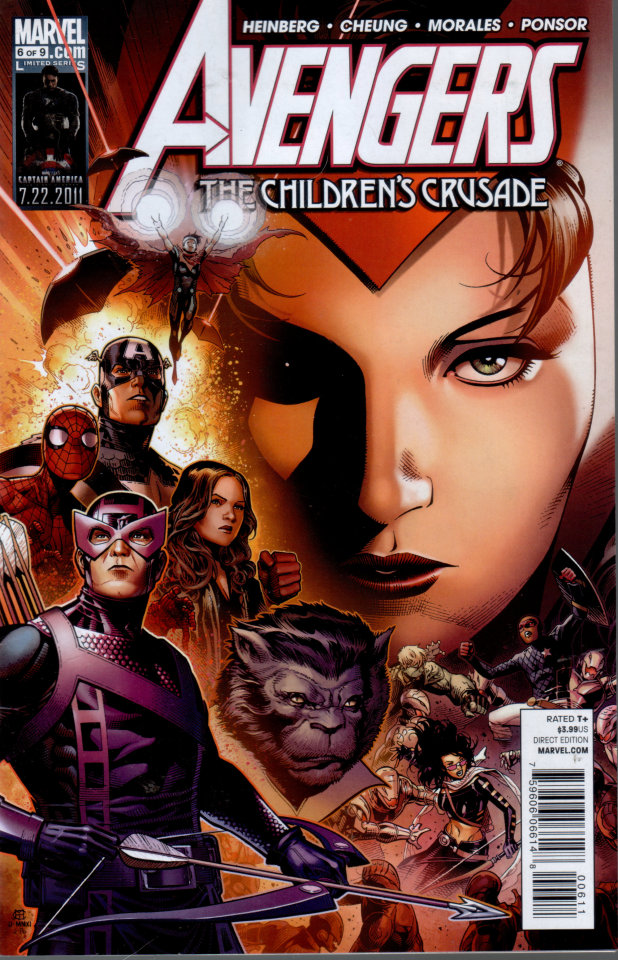
Best Walking Dead Collectible Action Figures and Graphic Novels
The Amazing Spider-Man hasn't been considered one of the most popular super heroes. I tend to be of your Batman and Wolverine sort of guy myself. However, I can't sell Spidey short when talking about his history successful summer blockbusters. He's been in some hits which are considered to be thousands of comic movies ever. The next work for balance box office glory from Spider-Man is reboot and yes it stars a new cast which has a somewhat familiar story. Only time will tell how whether or not this can live up to past glory of their predecessors.

First some definitions, specifically just what comic, a graphic novel, along with a Manga. A comic can be a format to provide a medium, within our case a tale. A graphic novel is only a longer comic. However, parents often get concerned once they hear graphic novel, mistakenly thinking it's got something to do with graphic such as inappropriate adult material. Graphic in our case merely means art. Graphic novels are certainly not a genre boost the local tissue. There are graphic fiction, graphic nonfiction, graphic mysteries, you get the idea. Finally, Manga is a Japanese term for their comic medium which enable it to be quite fun for kids since it reads from right to left. Kids often love this given that they can easily conform to the format but their parents generally battle to read them.
Loki, he in the golden horns who had earlier made life difficult for Thor inside movie Thor, runs a pact having an unknown race, an alien race, may help him extract his revenge, if he opens a portal for them to attack Earth. Loki does what he could be told, and steals the Tessaracat (a McGruber if there ever was one), and opens a portal for your other world to fight Earth. Loki steals the Tessaract, requires a band of scientists and Hawkeye under his command, and opens a portal that literally brings the aliens onto Earth.

But as companies use digital comics to reach new potential markets, will the entire process of comic writing and drawing should evolve at the same time? Until now, the phrase "digital comic" has often been employed to describe a print product scanned right into a computer. Even webcomics, which are released digitally, in many cases are designed specifically to be gathered into print editions; in fact, this is often the goal of webcomic creators, since the digital versions are free. But a lot more creators are coming up with truly digital comics, involving screen technology to see stories in a manner that print cannot. Will this customize the convention of writing monthly comic scripts with twenty-two pages of content? Or will storytelling chapters be broken into shorter or longer sections, with corresponding changes in release schedules? And will these creators still try to collect their stories into print versions, knowing some of the storytelling itself is going to be lost from the conversion to print? Stay tuned, the subsequent couple years should provide some interesting new answers.
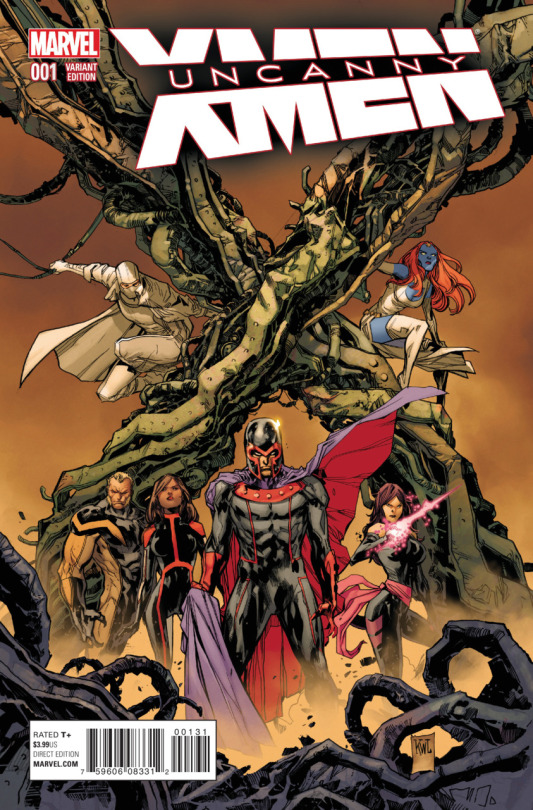
Owning and paying attention to a radio or perhaps a radiogram would be a wonderful experience, particularly when it turned out capable to grab stations from around the globe. The fact that they crackled and were packed with a number of interfering noises simply didn't matter at all. Of course, there were no such thing as television with an alternative source of information.
1 note
·
View note
Note
Have you seen Altered Carbon? If so, what do to think of it?
Alright, I finally bucked up enough courage to do another honest, non-sarcastic, write-up for a piece of media. Just been somewhat bitterly reluctant to voice my true opinions on fiction, or anything else really, since it seems like lots of folks are quite intensely engaged in violent uproars of one kind or another. No need to add more noise to the feedback loop, if you know what I mean.
But you’re, like, one of a dozen or so dudes who asked me about this series. So I reckoned I’d write it up for you, it being such a popular subject and all. I’d also like to thank you for your curiosity. It’s pretty damn humbling to know anybody cares enough about what I think to even ask after my thoughts. I’ll make sure to offer a notary warning before I spill any spoilers.
I became acquainted with Richard K. Morgan’s Kovacs-verse a few years back, but accidentally read one of the protagonist’s later adventures before backtracking to the original novel. I found it to be a respectably well-written futuristic detective story in the grand tradition of vintage writers like Robert B. Parker, even if including the predictably pornographic sex scenes in the grand tradition of modern urban sci-fi/fantasy writers like Laurell K. Hamilton (maybe the ‘K’ middle initial is a code for graphic sex content). In preparation for watching the new Netflix series, I re-read Morgan’s Altered Carbon to refresh my knowledge of the future he created.

Now, I’d like to say I’m a prolific reader of novelized fiction and other books, but I’m not one of those “hardcore” purists who always cries “the book was better” while pounding my fist on the podium. Thus in my effort to avoid any such farcical nonsense, I’m going to sort of examine both the book and the Netflix series of Altered Carbon at once, and write about what I enjoy and dislike about both versions, instead of directly comparing them.
I’ve grown so cynical with modern film and TV, I tend to unintentionally generate lists of what I think they’ll change about a book’s story once they adapt it, and what they’ll add and leave out. Usually, these lists are fairly accurate. Game of Thrones, for instance: how depressing it is to be absolutely correct some times. Not that the books were much better, but a pinecone up the ass doesn’t make a kick in the nuts feel any better.
A lot of people would describe Altered Carbon as having cyberpunk vibes, and this is true, but I believe it fits more comfortably into the realm of biopunk than anything else. If you’re not familiar with the concepts herein, Altered Carbon involves a distant future in which humanity has colonized the stars over many generations using sleeper ships, and with a little help from recovered alien star-maps, but has not achieved faster-than-light interstellar travel. The central technology in this universe is the cortical stack, a type of neural backup which allows a person’s consciousness to be digitally stored in a “disc” and uploaded into a new body if they die.
The new bodies are referred to as sleeves, and the filthy rich clone themselves so their sleeves are all identical and genetically enhanced, but most common folk have to accept whatever body is available or is covered by their insurance, or even a synthetic sleeve (which in the novel is a cheap and distasteful thing, but in the series synthetics seem to have superpowers). People can only travel quickly to other star systems in the settled worlds (known as the Protectorate) by transmitting their stored consciousness into another cortical stack on their planet of destination and uploading into a new sleeve there (a process called needlecasting), but physically transporting anything still takes a really long time for ships to travel across the vast distance of space.
Straight out of the gate, this concept does not appeal to me at all. If there’s anything that drains your story of tension and thrills, it’s got to be the idea that everyone lives forever. The way the universe is constructed however, it ends up making the story far more interesting than what I had anticipated. Not everyone can afford to live forever, first of all, since re-sleeving can be an extremely expensive undertaking, and even those who have the money rarely feel the desire to live more than two lifetimes. Additionally there are complications which can arise, such as personality fragging, a type of insanity which occurs when a person is sleeved in one too many different bodies throughout their life.
Certain religious groups also vehemently resist re-sleeving, and for law enforcement various lengthy sentences of storage without the possibility to re-sleeve are the primary means of punishment for most crimes. There are even interesting concepts like criminals who copy their consciousness into several cortical stacks at once, making them difficult to apprehend once and for all. Other criminals and intelligence operatives also utilize virtuality to torture people in a digital environment, allowing them to subject victims to days or even months of agony which equates to only a few hours in real-time. Real death can also still occur, if the individual’s cortical stack is badly damaged or destroyed.

The actual plot involves a former soldier named Takeshi Kovacs, who is paroled early from a criminal sentence and re-sleeved by a rich tycoon who offers to exonerate Kovacs of his crimes if he can solve a murder. While reluctant to work for some rich asshole, Kovacs is almost instantly attacked by mercenaries which makes him curious enough to take the case. Kovacs then works to investigate the purported crime while getting himself into a bit of trouble with the locals, and trying to deal with extreme trauma from his combat experiences.
It’s surprising that in the case of Altered Carbon I was entirely incorrect in everything I thought the producers might add/change/amputate from the original story. I also could not have predicted what they decided to add and how they decided to change certain elements from the story of Morgan’s novel. I believe the series they crafted from his story is competently scripted, very well cast, doesn’t waste too much time with any silly subplots, and is generally a well-paced, adult-themed sci-fi story. Altered Carbon really wants to take itself seriously, in the same vein as things like SyFy’s praiseworthy diamond The Expanse, but its unique setting gets a little too bogged down in conventional tropes for my liking. Gratuitous T&A (as well as other, less commonly exploited extremities) and generous helpings of the fuck-words do not an edgy and intense sci-fi experience make. Good but not great, would be my general assessment of the series.
Don’t get me wrong here, Altered Carbon is plenty intense, even thrilling at certain points, but a somewhat bland smattering of writers and directors, thrown into the recipe with a few others who are brilliant geniuses, create a mixed bag of stylistic choices which don’t always fit together very well. So you’re often left with an unusually faithful adaptation of a badass novel, wonderfully enhanced in certain aspects, but grotesquely mutated in others, and some of the conflicting storytelling elements feel hurriedly stitched together. A Patchwork Man of a story, rather than prime quality tank flesh. None of Altered Carbon’s flaws are crippling however, and all-told I’d say the series is eminently watchable and very worth your while if you enjoy futuristic sci-fi stories.
WARNING: Spoilers ahead.
First the good news. This series stars an extremely talented cast of performers who own their roles with wonderful conviction, and very convincing poise.
Joel Kinnaman has been on my good side since he appeared in The Killing, and even his unfortunate role in the Robocop reboot didn’t water down my appreciation for him. I feel like his role as the newly sleeved Takeshi Kovacs was perfectly cast. Martha Higareda is just a little too cute to be such a badass, but she winds up playing Detective Ortega to that strong female archetype in a far less sensational and much more casual way than what you might expect from the modern trends of scripting for such characters. Though quite the opposite of Higareda in terms of the role she plays, Renée Elise Goldsberry brims with charisma as Quellcrist Falconer, a sort of futuristic Che Guevara if he had also practiced Zen and gong fu, and was a woman. Chris Collins is also incredibly memorable as Kovacs’ A.I. hotel manager Poe.
Ato Essandoh as Vernon Elliott became one of my favorite characters as the series goes on, and though I wasn’t totally sold on the arc of her character Hayley Law as Elliott’s daughter Lizzie completed a very nice trifecta of beautiful lead women who just happen to be racially diverse. The third of these ladies, of course, is Dichen Lachman who I’ve got to say delivers probably the most convincing and most nuanced performance in the entire series, having to run a wild labyrinth of different emotional expressions which all feel very genuine. As was the case with Sylvia Hoeks as Luv in Blade Runner: 2049, Dichen Lachman as Rei hooked me instantly and woudn’t let go. Maybe I just got a thing for sociopathic women or something.
There are also a few minor roles worth mentioning, Marlene Forte does a great job as the overbearing mother of detective Ortega, which again felt very genuine and not forced, Tamara Taylor as ambitious sleazy attorney Oumou Prescott gave me chills with her smug smile (again perfect casting), Kristin Lehman and James Purefoy seem a perfectly matched pair of megalomaniacs, Byron Mann and Will Yun Lee kick ass portraying Kovacs at very different stages of his troubled life, and there is some terrifically believable acting on the parts of child actors Morgan Gao and Riley Lai Nelet.

All that being said, not everything the actors are given to do is particularly well-written, in my humble opinion.
Takeshi Kovacs is something called an Envoy, a type of specially trained soldier who is mentally conditioned to be hyper-aware at all times, integrate and adapt to new environments and circumstances, and even manipulate his own bodily chemistry, allowing him to eliminate the pain threshold, instantly recover from debilitating drugs, and avoid lingering trauma from torture. The Envoys were created to help the Protectorate put-down political dissidents and rebels, which were running rampant throughout the settled worlds at the time of the Envoy Program’s inception. Many of these rebels often followed the outlawed “Quellist” writings of an infamously respected revolutionary leader called Quellcrist Falconer who fought, and lost, against the Protectorate hundreds of years before the time of the novel (and long before Kovacs was born). When she was born, Quellcrist Falconer, like Kovacs, also happened to be from Harlan’s World. In the novel, this reputation causes Harlan’s World to be viewed as a backwater source of rogues and misfits by citizens of more civilized worlds (which is fair, since it’s described by Kovacs as being overrun by crime syndicates and swamp gangs). But even compared to Harlan’s World, Earth is considered a polluted over-populated shit hole.
In the novel he was trained by the somewhat fascist forces of the Protectorate, and the Envoy Corps was an elite black ops group who could be transmitted to any planet and topple the regime in less time than it would take a massive army to win a single battle. In the series, Kovacs is just a random soldier burn during the time of the Quellist revolution, but Envoys were created and trained by revolutionary leader Quellcrist Falconer to combat the very fascist forces of the Protectorate, whom were too used to conventional warfare to properly adapt to Quell’s asymmetrical tactics.
The problem for me, with this particular change in the writing, is that much of the details have been glossed over. I never got a sense of how Quell was able to so efficiently condition her soldiers into such a formidable force, nor did her portrayal emphasize her military acumen in this manner very convincingly. Quell’s character is certainly charismatic and sympathetic to the audience, but I find it much easier to accept that Envoys are the product of sociopathic, strict, and brutal military conditioning than to grasp the concept that a fairly undisciplined group of freedom fighters were able to develop such a sophisticated method of training. If Quell’s rebels were portrayed differently, it might be easier to accept, but in the series they seem more like hippies with guns than hardened elite warriors.
This is one of my only major gripes with the series as a whole, and it wouldn’t even be that big of a deal to me if it didn’t play such a large role in the plot and arc of Kovacs as a character. I didn’t like the way it changed his backstory either.
See, in the novel Kovacs is a former Envoy turned career criminal since Envoys are generally feared by everyone despite their having fought for the Protectorate, so they don’t have a lot of options and their skillset is only useful in a limited context. He’s haunted by his combat experiences, regrets his role in assisting the government in putting down various rebels, and has a cultural misunderstanding of Earth because he’s from Harlan’s World. His criminal ventures could be seen as his own personal revolution, and Kovacs has spent about a century in and out of storage since leaving the military, but has only been consciously alive for about forty years. He isn’t portrayed as a morally centered person, but he has his own system of honor, and he selfishly accepts Laurens Bancroft’s offer because it’s a way out of a lengthy sentence. This gives him a nice arc, because he slowly becomes more morally invested in what he’s doing as certain things come to light, and ultimately risks it all toward the end basically to avenge the death of a prostitute and save a single life, which is a nice shift in contrast from the Kovacs we see leave storage at the start of the book.
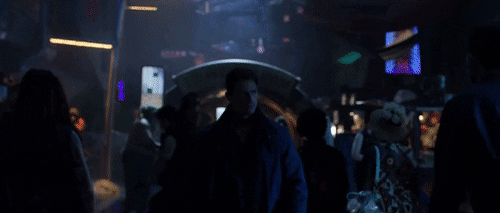
In the series Kovacs is a lovesick puppy dog, who misses his one true love. He’s a former Quell revolutionary who also became a career criminal, but the moment he got caught they put him in storage indefinitely, because he’s the last of the Envoys, the rest of which were mercilessly butchered by stormtroopers from the evil Protectorate which has no redeeming qualities whatsoever. When the series begins, he awakens 250 years after he was captured and he finds that the galaxy has become what he always feared, a one-percenter’s paradise ruled by the rich, where the poor are exploited and marginalized and everyone with even the slightest sense of prominence is an irredeemable asshole. Politics aside, this change makes his character arc far less interesting to me, because he doesn’t want to help Bancroft but his reluctance comes from a very different place than the book, and ultimately Kovacs accepts the offer not out of selfishness but because the ghost of his dead girlfriend tells him to.
This also deeply conflicts with the first time we’re introduced to Kovacs, in his usual East Asian sleeve on Harlan’s World where he speaks of caring only for “getting paid” and seems like a typical devil-may-care bad boy. Then when he’s talking to Bancroft, he tells the tycoon “Some things can’t be bought. Like me.” So which is it? Do you only care about getting paid, or can you not be bought? This makes for a somewhat confusing characterization of Kovacs, who one minute is murderously avenging himself upon psychotic bio-smugglers and claiming he cares for no one, only to turn around and behave like a typical romantic the next. It isn’t entirely jarring, but for me it hurt the dark tone and mature themes to discover the central core of the series is a centuries-old fairytale love story.
Sorry. I like fairytale love stories. But I also like darkly thematic dystopian science fiction, and in my opinion the two mix about as well as apple liqueur and olive oil.
This is all, however, as I said one off my only major gripes about the series. And even the sum of its parts aren’t badly executed. Like I said, Quell is charismatic, Kovacs is haunted, and all three actors (Kinnaman, Goldsberry, and Kim as Kovacs in his original sleeve) deliver convincing performances as well as share a great sense of chemistry, so the love story is believable at least. Visual effects and set design are also wonderful, and for such a high concept sci-fi setting it all feels very seamless. Dialogue is well-scripted as well, and most of Poe’s interactions with other characters are some of the best scenes. It’s also nice to see a series that exploits the naked female form to a fault, yet also makes a point to ensure you get just as much if not far more male nudity to surprisingly counterpoint its shamelessness. I haven’t seen this many swinging dicks since the last time I read YouTube comments. Just makes you feel better when the characters finally ride the stuffed unicorn, know what I mean?
Many of the minor roles from the novel are also modified to make certain characters more important, and some of their roles have been altered so that they are completely different people. Some of these changes work better than others. Rei, as Tak’s sister rather than just some asshole crime boss he once knew, was a change in the story that had the reverse effect of how I felt about the altered Kovacs/Envoy backstory. It makes Reileen a more interesting character than just the Big Bad you might expect in such a story, and causes her motivations, maniacal as they remain, to be far more empathic and invested in the events of the plot. In that light, they made the villain stand out as memorable among the bland villains we often get in movies and TV shows now, thanks to the K-Mart quality antagonists so popularized by the Marvel movies.
While certainly not perfect, Altered Carbon still manages to offer fans of science fiction a fascinating world populated by characters who are easy to give a damn about, and a galaxy spanning story of heartbreak, betrayal, and retribution. I personally wasn’t that big a fan of the romantic warrior monk stuff in this particular story, but that doesn’t mean it won’t appeal to others. There’s enough mystery here to keep you guessing, and enough solid dramatic force to keep us wanting more on its own merits, not by virtue of any stupid cliffhangers. Much of the visual style and action sequences are just icing on the cake, really. Though, I confess, I almost jizzed my pants when I got to see the Phillips Squeeze Gun in action. And there’s nothing quite like one of those sci-fi stories where someone picks up a samurai sword, let alone during the finale.
All told, I’d watch Altered Carbon again, and you should too. Regardless of whatever I say, or my own personal preferences, it deserves your attention. Because it may be adapted from a novel, but a least it’s trying to be something different than most of what’s out there right now, even if its poetic love story doesn’t want it to be. So, ignore cynical bastards like me, watch the damn show and decide for yourself.
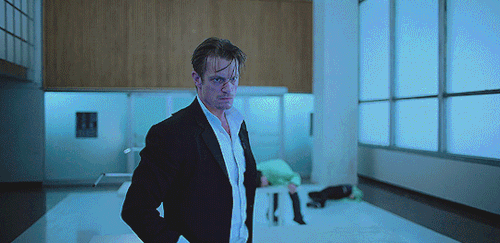
侍 headless
#cut-rate journalism#biopunk#altered carbon#joel kinnaman#dichen lachman#martha higareda#renée elise goldsberry#science fiction#anonymeisters#curious people#stuff i write#tv shows#reviews#netflix#gif#takeshi kovacs#detective fiction
131 notes
·
View notes
Text
If You Can’t Stand People Fidgeting, You May Have Misokinesia
In 2014, Todd Handy was having dinner with a new girlfriend when she interrupted the meal with a confession. "I don't want you to feel attacked," he remembered her saying.
She explained that Handy had a fidgeting habit, and she found it very stressful to watch and be around. "Of course, I was concerned as a partner,” said Handy, a professor of psychology at the University of British Columbia. “But as a visual neuroscientist and somebody who studies visual attention, it really piqued my interest. I thought, 'Hey, what's going on here? This is a very interesting phenomenon.'”
It sounded to Handy like a visual version of misophonia—the “hatred of sound,” or "sound rage," a condition in which people have intense emotional and physical reactions to trigger noises, often chewing or lip smacking. When he consulted misophonia research, he found that a paper from 2013 had called a reaction to visual triggers misokinesia, or a "hatred of movement." He casually started to ask his lecture classes if anyone was bothered by seeing another person fidget.
“And literally a third of the class would raise their hands and you could just see this look on their faces they were like, ‘Oh, my gosh. He’s talking about something I'm suffering from.’”
Last week, Handy and his colleagues published the first study to focus solely on misokinesia in Nature Scientific Reports, with first author PhD student Sumeet Jaswal. The paper is mostly focused on determining how common misokinesia might be—and their findings remarkably resemble the impromptu surveys Handy did on his classes. In a total of over 4,000 people, one-third said they were sensitive to watching others fidget, and that it caused negative emotions like anger, anxiety, and frustration to arise.
Arjan Schröder, a postdoctoral researcher at Amsterdam UMC and the first author on the 2013 paper that coined misokinesia, said this prevalence matched what he has seen in his misophonia patient samples. Yet, as Handy's work shows, misokinesia might also be quite common in general populations too.
Handy and his colleagues first asked a group of students whether they ever had “strong negative feelings, thoughts, or physical reactions when seeing or viewing other peoples’ fidgeting or repetitive movements," like someone’s foot shaking, fingers tapping, or gum chewing. 38% of the students responded yes, and 31% reported having both misokinesia (visual) and misophonia (audio) sensitivity.
Then they asked an older, more demographically diverse sample (not students) and found a similar prevalence: 36% of participants reported they had misokinesia sensitivity and 25.5% reported having both misokinesia and misophonia.
It's an intriguing finding that misokinesia and misophonia seem to exist both together and in isolation. On the subreddit for misophonia, one person shared that noises didn’t bother them severely but fidgeting did.
“If someone starts shaking [their] foot or tapping their hand, even if they make no sound whatsoever, I get very irrational and I have to block my view, usually with my hand,” they wrote. “EVERYONE shakes their foot. I can't live with this anymore. Everyday I encounter MULTIPLE PEOPLE AT ONCE shaking their feet and I only have two hands.'' Another remembered losing their temper as a child as a man in an elevator tapped his foot, so much so that they stomped on his foot on their way out.
Watch more from VICE:
Sometimes people can have both triggers, but one is more upsetting than the other. “My visual triggers are just as hard to handle as my audial triggers,” one person shared on Misophonia Education. “Sometimes they are worse. I find it nearly impossible to escape a sight in the room. Even when I close my eyes, and even hours or days later, the memory is still there. I want to cry as I think of these triggers. Legs shaking, people swaying, fingers and toes tapping.”
Having both audio and visual triggers can make interacting with the world all the more challenging. And whereas people with misophonia can wear headphones to block out noise, “I can’t wear earplugs for my eyes,” another shared on Misophonia Education. “I suppose I could wear a blindfold, but this has impractical applications. I am also more likely to remember visual triggers and never want to go back to the place. If I have been visually triggered somewhere in the past, I will not want to go back.”
Handy thinks the next big questions their study poses are how exactly misokinesia is related to misophonia, whether it can help better explain the mechanisms of misophonia, and whether it can potentially lead to coping strategies and treatments.
Schröder believes there are likely similar mechanisms at play since both misokinesia and misophonia involve an irritability triggered by human cues: movements and sounds. “Both have a repetitive nature and some form of unpredictability: When will it stop, when will it start again?” He said. “Additionally, I think, there’s some moral assessment at play. The person who is experiencing the emotion thinks something of the trigger: Why is the source of the sound/fidgeting doing it? It seems useless! Why do you continue?”
Elsewhere, there have been several attempts to understand the biology of misophonia. One study showed through fMRI imaging that there was an increased activation in a part of the brain called the anterior insular cortex in people with misophonia. This area of the brain is important for, among other things, sensing one’s own body and processing emotions.
Recent work from Mercede Erfanian, a neuroscientist at University College London, found that misophonic's brains function differently in the premotor cortex: the premotor cortex and auditory cortex were hyper-connected and they were communicating more than is considered typical. "This means when sufferers listen to sounds, the premotor cortex also activates, and this does not happen in the brain of non-misophonic people,” Erfanian said. A similar pattern was found between the premotor cortex and visual cortex.
Erfanian thinks this could be a neurological basis for these reactions, and that it may implicate the involvement of mirror neurons, neurons that activate when we see others move, as well as when we move ourselves. It could help explain why some people with misophonia say that they mimic the sounds as a coping strategy, to cover up hearing the trigger noises with their own sounds, she said.
The neuroscientist and author V.S. Ramachandran and his colleagues theorized that there might be similarities to synesthesia, when sensory stimuli trigger other sensations and emotions. Typically with synesthesia, letters evoke sounds, or sounds evoke colors, but in certain subtypes it can be more varied. In a case of tactile-emotion synesthesia, the feeling of sandpaper evoked a feeling of jealousy, and denim provoked the feeling of disgust and depression.
Handy, as a scientist focused on attention, still has questions about whether misophonia or misokinesia triggers affect our attention in an outsized way—if they're somehow telling the brain that those triggers are important, and need to be attended to. So far, Handy said, they haven't found any definite links to attention. Misokinesia sensitivity wasn’t related to being better able to ignore distractions in the peripheral vision, nor to paying attention to sudden events in their periphery.
While all of this is fodder for future research, Handy hopes that the immediate impact of their paper is that it helps people with misokinesia to feel validated if they're struggling and gives them a word to describe their reactions and tools to ask for accommodations or develop coping strategies. While there's currently no evidence for what treatment might work best for misokinesia, avoidance doesn’t work in the long term, Schröder said. Treatments that help misophonia, like cognitive behavioral therapy, could also be useful for misokinesia, but it will have to be tested in the future.
Schröder said that when he first started misophonia research in 2009, people with misophonia were relieved to finally have someone to listen to them and take their symptoms seriously. The same could be true for misokinesia.
It's tempting to hear about misophonia and misokinesia and think, "Isn't everyone annoyed by fidgeting and lounds chewing?" And while there is certainly a spectrum of how bothered people can be, on the extreme end of the spectrum, people can experience huge disruptions in their lives. The people Schröder works with can’t often eat with family members, or can’t work in offices with their colleagues.
“Being annoyed by other people’s behavior is a common thing,” Schröder said. “We can all experience that. However, in misophonia (and possibly misokinesia too) it’s more than that.”
On Allergic to Sound, a website that shares misophonia personal stories, one person wrote how misokinesia could interrupt something as basic as going to a movie with a friend—when said friend took a ring off his finger and began to play with it.
“He then raised it to his mouth and spent the rest of the film popping it in and out of his mouth. He did this silently and didn’t make any dramatic or disruptive movements, but to me it felt like my whole world was on red alert. All I could focus on was that irritating movement out of the corner of my eye. It was so bad that I can’t remember a single thing that happened in the film – I don’t even remember what the film was called. What I do remember, in painstaking detail, is every single minute little movement he made with his hands.”
Follow Shayla Love on Twitter.
If You Can’t Stand People Fidgeting, You May Have Misokinesia syndicated from https://triviaqaweb.wordpress.com/feed/
1 note
·
View note
Text
Top 10 Sex Doll Movies and Series You Must See
Sex dolls are becoming more prominent in our culture for a wide variety of reasons. This manifests itself in often strange ways, and humorous ones, but their representation in Hollywood Movies is where these manifestations are made on the grandest of scales. Sure, sex dolls appear in pop-music and rap songs, but never as a figure that could be described as a central figure or main role. In this article, we will discuss the biggest and best ways Hollywood movies were inspired by the wonderful world of sex dolls! If you are a proud owner of a sex doll, you will thoroughly enjoy seeing these artists' renditions of how the future of sex dolls might grow to interact with your life! If you are still sitting on the sidelines, you will be shocked at how normal the concept of a sex doll is in movies that might be from your own childhood! Either way, life imitates art, and while sex dolls might not be a big part of your life now, all the signs point to them being very involved in your future! Our sex dolls are actually among the best-rated sex dolls in the industry, so we're here to help! At the end of the day, you will want to see all these movies on their own merit! Here is our list of movies that every owner of a sex doll does not want to miss!
1) Dummy
The mediocrity and insanity of this show force our hand into giving it our first spot. Most movies and shows incorporate love drama, sexual desire, or deep philosophical questioning at humans' future with sex robots. This show, almost accidentally, creates the most realistic modern 2020 rendition of what will happen over the next few years. This one is hard to not spoil, so just imagine an angry, rebellious teenager who runs away from their oppressive family. Now, imagine that person has a friend who owns a sex doll. Ask yourself, what are the odds people are going to take, or steal, their friends sex doll and run away on an adventure with them? Even though it's a girl stealing a robotic girl, why is it that she forms a very real friendship with the device? Is it even a device at that point, if it genuinely offers support for her very real problems? This show delivers these questions and many more directly to your brain using comedy and Anna Kendrick as the leading actor.
2) Ex Machina
There is exactly zero possibility that you haven't heard of this movie, and about a 50% chance you've already seen it! This 2014 classic is one of the biggest Hollywood productions ever focused around the subject of sex dolls, and it was widely reviewed as a positive concept. The popularity of this movie was for two major reasons. First, the very stunning beauty of the robots quite closely resembled that of what are now popular sex dolls in today's world. Second, the movie delved deeply into the hypothetical potential of consciousness in our robotic creations. Obviously, we aren't spoiling anything, but this movie has an interesting perspective on what the very nature of thoughts is in the CPU-based minds of these little robots.
3) A.I. Artificial Intelligence
This is a movie you might have already seen, as it was so popular when it was released in 2001, but the association with sex dolls was more subtle as the main point of focus was that of artificial intelligence itself. Everyone loves the imaginative limitless potential real robots bring to our lives, both on the big screen and in real life, and the sexual nature of their presence is often so obvious and positive - it doesn't even need to be mentioned! We will not spoil the plot of this movie either, but let's just say it's about a male robot who is quite literally programmed to love.
4) Electric Dream
Originally released way back in 1984, this movie was way ahead of its time. Sure, people had cool ideas about a robotic and sex doll future. However, Electric Dream forecasted the natural and competitive nature between a male human, a female human, and a robot. Not surprisingly, everything from biology to robotics wants to enjoy the attention they believe they deserve. In this first-ever "love triangle" with a robot, it takes a very unique twist!
5) Her
In 2013, the movie 'Her' was released, and this movie was one of the first to make a very realistic representation of the very real and natural scenario about how a man can grow to appreciate a robot in more ways than one. The idea of men and women falling in love with their robotic partner was often overlooked, but this movie did a great job predicting what would only be just around the corner a few years later. Now, there are quite a few easily accessible stories about men and women who have formed a very real and lasting bond with their robotic better half.
6) Lars and the Real Girl
Starting off the list right is Lars and the Real Girl, a movie featuring Hollywood's beloved Ryan Gosling made in 2007. This movie is actually quite sensitive and sentimental, revolving around a man who just wants to live a predictable and planned out life. Without spoiling the plot, the character suffers tragically in his personal life and he learns the true cost of even the loving side of human affection. When he discovers a particular love doll, it fulfills the exact mental and physical needs of his mind and body demands of him, while avoiding the long-term cost of that of humanity.
7) Robots
While shocking, the movie Robots is actually set in a world filled with robots. This movie is so far set in the future, they seemed to forget about the entire human, and just viewed the world after the sex doll takeover. If you watch this movie, you will see how beautiful and nice their robotic-filled world actually is, and overall - it's simply a beautiful vision of our future! Maybe we become these robots who surround themselves with art, balance, and beauty?
8) Metropolis
Being the oldest movie on our list, this one is truly legendary as it originally came out in 1927! This movie is also interesting because it is very close in its prediction of where we will be in only a few more years at the current technological growth we see. The basic gestalt of the film is about a mad scientist, who lives in an even madder city, decides to create a lovely robotic companion. This companion becomes larger than life herself and begins to take direct action on the mad city she finds herself in.
9) AI Rising
This recent 2018 release is set into the far future when humans and androids coexist on Earth and in space. It turns out, our android phones of the future will eventually merge with the sex dolls we have today, and the combination is a thing we humans are quite fond of! This is more of an action and adventure movie, with a premier representation of the future equality we will share with sex dolls.
10) Big Hero 6
We had to have at least one movie on the list! Like all films, it avoids the more base sensations, but it does delve into adult subjects of artificial intelligence gameplay. In the film, a boy and his AI-robotic dog find themselves growing and adapting to their adult world together. Naturally, through situations of their own creation, they are forced into choosing to do acts of good or acts of evil and begin to learn to think critically.
0 notes
Text
A Movie Review: Annihilation
(Hey y’all, I wrote a movie review of this thing that came out like a month ago and it was fun so have this and I will do more- probs Thor and Black Panther coming up next cuz those have been my faves)
WARNING: SPOILERS
Alright. So, let me start of with a slight disclaimer: I have read the entire Southern Reach Trilogy. The reason I begin with the fact that I am a fan of the books is because I feel that reading Annihilation has very much informed how I feel about the film Annihilation. Although I went into the movie knowing that it was going to be very different from the book, I still couldn’t help but compare, and I was a bit disappointed. So, when you are reading this review, keep that in mind. This is not going to be a spoiler-free review: THERE ARE SPOILERS HERE. If you have not seen the movie, and are here to find out if you should go or not: Go and see it. If you have read the books, go and see it. If you have not read the books, still go and see it. I think Annihilation is worth the watch for anyone who enjoys science fiction, and it is for SURE something that needs to be experienced. Me telling you about the film won’t be the same, not by a long shot.
I don’t usually do movie reviews. In fact, this is my first one. So, let’s try out a little formula, which i will then immediately break because I need to review Annihilation a little differently. I’m going to look at it in terms of a few things. 1) How did I personally enjoy the film? Did I like the characters/ setting/ mood/ story, etc.? 2) Did the movie do what it set out to do? So, in the case of Annihilation, did it make me feel really freaking weird? And 3) Would I recommend this film, yes or no, and then an explanation of why. More in depth than my recommendation at the top, obvs.
Okay, here we go!
1) How did I personally enjoy Annihilation?
I’ll start off by saying that Annihilation is NOT a masterpiece, at least not to me. I’ve seen quite a few reviews saying that it is, but it didn’t quite get there for me. Now, that’s not to say that it was bad. On the contrary, I think it was good, and after taking about a month to incubate, re-read the book, and think in depth about the film, I will say that it is even a little bit more than good (I do need to re-watch it when it comes out on Netflix for sure). It was a solid sci-fi film with some excellent elements- for example, the visuals were AMAZING and really fit the overall tone, but with enough problems that took away from the overall experience. If I had to give it a rating, let’s say out of ten, I would say this is a solid seven or seven and a half. Now, I will instantly temper that by reminding you all that I am a HUGE fan of the book, and that has 100% colored both my enjoyment and interpretation of the film. Let’s talk a little bit about why (and here is where I diverge from the template I developed five minutes ago for myself).
The novel is narrated by the main character, known only as The Biologist. We get not just her words, but her inner monologue, her thoughts, feelings, experiences, all described to us very intimately, as if she were telling us herself. She is also an unreliable narrator- we know as little as she does, and her recollection is influenced by her own perspectives and biases. The movie is NOT narrated by the Biologist, who is named Lena in the film, though it is told from her perspective. We get a glimpse into her life, her thoughts, her feelings, as she is the lens through which we enter this world, but it is nowhere near as intimate and in-depth as the novel. They changed her character drastically and, while I think I would have very much liked Lena in another film, the fact that she was supposed to be The Biologist kind of ruined her for me. The Biologist is what made Annihilation the book so entrancing and hypnotic for me. We went on a journey with her, we learned things, and then we left her behind to go into the other books. She was our guide- this is not so much the case in the film. And that detracts something.
However, stepping away from The Biologist (Lena), the other characters were great. I think that all of them were colorful, bright, and simultaneously dark and twisted in just the right ways. I connected to them all, they felt real. And they all did a superb job in their roles. The actresses were very well cast- even Natalie Portman, who played Lena, did an excellent and evocative job. She did succeed in moving me and making me feel things, and I know I would have enjoyed her character a lit more had I not read the novel.
My feelings about the overall story are similar to those I have for the character of Lena. I think it was very well done, well executed (except for the end but a bit more on that in a second), but knowing the books took away my enjoyment. The story also was seriously lacking, in my novel-ridden opinion, especially in the end. Lena’s “defeat” of Area X seemed very, very lackluster to me: one of the best aspects of Area X in the novels was that it was a thing that could not be stopped, it was a thing to accept rather than fight. And in the novel, The Biologist does just that. But the film goes a totally different direction, and the “destruction” of Area X, while it is perhaps an artful metaphor for self-destruction (a running theme in the movie), really left me feeling, well, bleah. They do manage to save it right at the very end, with Lena meeting up with the “other version” of her husband and both of them revealing that they are not, in fact, themselves. It brings back that feeling of “Area X is here and we cannot stop it”, but it was seriously lacking when compared to the path of the novels, and my expectations. Despite the obvious flaws, the plot was exciting enough to keep me on my toes and keep me interested all the way through- something that not all movies I have seen recently can do.
Something that Annihilation got right, at least, was the mood. The atmosphere. The movie takes us into Area X, and the sights and sounds were right in line with what I expected. A beautiful, twisted, alien-yet-familiar world that both awed and terrified me. Perfect. The movie also added in creatures, monsters, something not in the book which I very, VERY much enjoyed. I would like to take a moment to give a shout-out to the bear- a monster that I am pretty sure was a representation of the Moaning Creature from the novel. It didn’t have a jumpscare, it wasn’t even loud- most of its scene was quiet. But it unnerved and disturbed me in a way that a movie monster has not in a very long time- namely because it had a human voice. A decaying bear, skull visible, with human eyes, a human tongue, and a roar that sounds like the dying screams of its last victim? Pure nightmare fuel, at least for me. I loved it. I was apprehensive about there being actual monsters in the movie, given that the unseen horror aspect of the novels was a huge part of their overall feel, but the bear/Moaning Creature was perfect for this film and I need to acknowledge that.
2) Did the movie do what it set out to do?
I would say so. It’s very rare for me to walk out of a theatre and not know how I feel about what I just watched, but that sensation is what I had expected from Annihilation. I went through cycles of loving the movie, hating it, being grossed out by it, being unnerved by it, all in the span of a few hours. So yes, the movie achieved its goal in making me feel something. I also know that the film did not set out to be a replica of the book, rather a take on it, so I cannot fault the movie for not being a carbon-copy of the novel. And it was a good take. But it didn’t leave me with the same feeling that I had when I read the novel. Horrified? Oh yes. Awed? Sure. Creeped out by that fucking zombie-bear? Hell yeah. But there was something missing. Alex Garland captured the surreal familiarity of an alien world on earth, and he did it well, and I almost wish I hadn’t read the books because then maybe I would have enjoyed this film a LOT more than I did.
But there was something missing. I remember my first experience reading Annihilation- I devoured it in a little more than two hours and sat in shock on my now-girlfriend’s bed trying to digest what I had just consumed. There was the horror and the awe, yes. But there was something else, and that something came from the tone of acceptance and resignation- which was oddly… I wouldn’t call it cheerful, but it wasn’t sad or angry. It just was..? And it was that feeling of ..? that defined my experience with the novel, and with the two after it (though Authority was a bit more defined by a feeling of “wow this is SLOW”).
I cannot say that the movie didn’t get where it wanted to go, because it did. It was a solid sci-fi movie with some disturbing imagery and elements and it was a good take on the novel. It just didn’t get me where I wanted to go, and that is wholly the fault of my viewing it through the lens of the novel.
3) Would I recommend this film?
Yes, I would. Whether you have read the book(s) or not, I think this one is worth the watch. Based on the reviews, and based on my own viewing, I will say that this isn’t a movie for everyone. It is super trippy- if you have epilepsy or some other condition triggered by bright, flashing lights or colors, I would suggest that you stay away from this one, as there are a few sequences near the end that get really bright and flashy- and will leave you with a LOT more questions than it answers, so if you are alright with that, go and see it. The reviews seem very polarized. People either loved it or hated it, and there doesn’t seem to be too much in-between (like me). But with all films, and especially a film like Annihilation, I would say that you need to see it for yourself to figure out how you feel about it.
Final Recommendation: Annihilation is a trippy, beautiful sci-fi film that carries itself pretty well despite it’s flaws. A big part of how I judge movies is if it is strong enough to get past its problems, and Annihilation fits the bill, I think. Go and give it a watch: I’m not sure when it is coming out on Netflix, but with visuals like this, maybe seeing it on the big screen would be worth your while.
#movie review#annihilation#i was bored and this happened#and I really liked it#so there will be more#read it or don't!
1 note
·
View note
Text
Interview with artist, Allegra Hangen
Last year my family and I saw the Frida Kahlo: Letters and Photographs exhibition at El Museo Latino in Omaha, Nebraska. That is when I met Allegra Hangen, the museum’s Education and Exhibitions Coordinator. We sat down at a craft table and she demonstrated for us how to make a miniature weaving with scrap yarn on cardboard. During our brief conversation at the table I learned that she is also an artist. Soon I looked into her work.
Allegra Hangen is a multidisciplinary artist whose work is highly influenced by her background in photography. Through the use of found footage and images from the archive, she addresses concepts around memory, family and their representations in mediated images, linking them to other issues including visual culture’s role in politics, the power of visibility, and language. Her video installations tend to include found and mass-produced materials that refer to repetition, fragmentation, the home, and the screen.
Allegra received her BFA in Photography from the Art Institute of Boston (now Lesley University Art and Design) in 2014 and her MFA in Visual Art from the Universidad Nacional Autónoma de México (UNAM) in Mexico City in 2019. She was selected as a recipient of the Stephen D. Paine Scholarship in 2014. Her work has been shown in various places in the United States, Mexico, Argentina, and Canada. In 2018, she had two solo shows in Mexico City: Weightless, exhibited at Salón Silicón and Visibilities: Iconicity and Intimacy on the Screen at Pandeo. She is currently a 2020 fellow at the Union for Contemporary Art in Omaha, NE.
Allegra agreed to join me in discussing her work in a meaningful way. Here is our conversation:
Travis Apel
This situation that we are in with COVID-19 is difficult to make sense of when and where things will get back to the way we remember them. How has this pandemic changed or affected you?
Allegra Hangen
It’s affected me in so many ways, as I think it has for almost everyone in the world. It’s flipped around previous priorities in different areas of my life, it’s given me some really amazing alone time, it’s allowed me to completely convert my living room into my studio and to consider where—or into what—I want to pour my attention. (Unfortunately social media has proven to be a huge time and energy suck but I’m working on that, as I imagine many others are at this point, too). Of course it isn’t always so idyllic as I’m making it sound, but I have definitely been enjoying much of it.
I don’t think we’ll really get back to things the way we remember them and honestly I hope we don’t. I think all of this has made very visible the toxic and unsustainable structures which have been widely accepted as “normal” but that desperately need to be uprooted. Lately I’ve been thinking critically about how I can react to this on a personal level, how I can remove myself and my ways of thinking and being in the world from these oppressive structures, whether that be from under them or from perpetuating them. I think this can be a huge opportunity for us to really critically look at ourselves and our complacency toward so many things happening in and to this world, and to search for innovative ways to construct something new.
TA
Yeah, I totally get your point about this being a critical time to reflect on how precarious this whole situation has been for way too long. This is a sobering moment when we think that it may eventually come to an end and the power brokers will try and pull us back. It’s happening now. But on a positive note, you got a show coming up.
In about a week you and co-curator will present a virtual exhibition in A Memory Held in You, sponsored by Amplify Arts Generator Grant. How will that event look for viewers who will be keeping a safe distance?
AH
Yeah it will probably be a tough process coming out of this but the most important thing is to just take care of ourselves and our communities right now, I think.
And yeah! Alex Jacobsen and I are opening (launching?) our exhibit A Memory Held in You both online as well as in the physical Generator Space. We’ll be utilizing FB, IG, and Amplify Art’s new virtual gallery space on their website to post and share things over the six weeks that the exhibit will be up.
The initial idea was to perform in the physical space with two dancers and an installation around which the audience could walk. But in light of the pandemic, we’ve had to really rethink “space” and how we share it. This is one of the reasons why we decided on utilizing various virtual sites to upload different aspects of the show: so the viewer has the ability to hop from platform to platform, constructing their own virtual, but still somehow spatial, experience of the installation. We’ll be uploading content every week on these platforms throughout the course of the show, and the first week of May we’ll kick off the exhibition with a livestream performance on FB/IG.
That being said, we’re still going to install in the gallery, but as a kind of “window display” that uses the whole space. People are encouraged to walk by the gallery on one of their daily walks (or bike or drive) to look through the window and get a glimpse of the videos and sounds that are playing in the locked space—held in the space.
TA
That’s interesting how you and your group will provide new content every week and using many virtual platforms. It sounds like the exhibition will be “living,” which spans over a period of weeks, rather than the single moment in time like a reception that we’re used to attending.
AH
I love thinking of it as living! Thanks for that word. It will definitely be more immediate than a physical gallery exhibit at least, anyone can access it from their bed, probably on the same device they’re using to read this. I think moving forward many more things will be virtual, especially arts-related, and I’m so excited to see how platforms will be utilized, or new ones established, to accommodate for “real experiences” online.
TA
Yeah, it will be new seeing how things move forward.
At what age did you become interested in collecting archival footage for creating your content?
AH
It was when I learned about the technique of found footage in my experimental film class in undergrad. I was already attracted to archival images and my family’s VHS tapes, but learning about its history made me understand that it was a viable way to make art (whatever that means…) and not just another hoarding pattern of mine, ha! Maybe it all still comes from a hoarding tendency, but at least I can justify it better now under the concept of found footage. It actually really started with one specific tape that contains material from converted 16mm and 8mm films that one of my family members filmed roughly between the 1930s and late 1950s in Iowa and Nebraska. Someone compiled all of the film footage onto the VHS tape to show it at a family reunion many years ago, but when I found it again during college I was really impacted by it both personally and for formal and conceptual reasons. I still react very strongly to these images and continue to work with the tape.
TA
Our condition of completing repetitive duties in the workforce often for years can bury past experiences into dormancy. What is it about your practice that can bring an audience to recall memories that were once forgotten? Why does that matter?
AH
I don’t know about making anyone recall a forgotten memory, I can’t even do that for myself! But I tend to look at the political and cultural patterns that show up in this found footage: in the way it’s shot, what the person actually decided to film, and the various objects and behavioral patterns that appear in the scenes. This inherently makes the images seem familiar to a wide range of people in this country. Friends, professors, or other people who have watched these videos but who aren’t from the U.S. have mentioned a familiarity with these images too, although this is a very different sensation of familiarity because it’s a mediated one that comes from (and references back to) American cinema from Hollywood. There’s something really interesting, as well, in that kind of mediated memory, or a distanced familiarity with media messages…
I’m not sure if any of this matters in the grand scheme of things but it’s something that I’m still very much interested in and continue to go back to in my work, in terms of looking critically at my identity as an American from a Midwestern family, in terms of trying to understand my country’s propaganda, and looking at how national patterns become integrated in our own intimate ways of being. (I’m thinking more specifically here about things that came up in work that I made while in my MFA program at UNAM in Mexico).
TA
Invitation to Ceremony was compelling to me. I am curious about the collaborative nature of the work. Did the performers create their choreography around Alex Jacobsen’s Baptism, or independent of it? Can you explain the process how these layers came together?
AH
Everything happened (and is still happening) really fluidly and naturally with this collaboration. Invitation to Ceremony isn’t necessarily a standalone video, I was always thinking of it as a documentation of/for a potential performance (which, if we were able to commune in a space, A Memory Held In You would have been that performance). The dancers, Gayle and Isabella, created all their own choreography but in a very intuitive and maybe even minimal or deconstructed way (I wonder if they would describe it that way…). They had a few repeating choreographed gestures based on some concepts we had talked about but they also played around with other techniques, responding to each other through movement. They improvised for a couple hours to a few different tracks of Alex’s and I just kept recording.
While editing the video, I was thinking about overlapping memories, the many memories held in a body or in a space, and recalling a memory through a bodily, physical gesture.
TA
Your PIP editing of Invitation to Ceremony presents a balance between the simultaneity of double footage and context for place. What did you enjoy most about putting this project together?
AH
Yeah, I saw this as a pretty literal tool to talk about that idea of overlapping or simultaneous memories. I also saw it as a way to combine all the different elements that would be present in an installation: movement, sound, and found footage/video. Because as an installation they would all be experienced at the same time in a physical space, I wanted to collapse that space in the video as well.
I enjoyed really just being able to play around with this project and to create again after a year of many transitions, long-distance moves, job changes, etc. This project really jumpstarted a bunch of new ideas around different ways to make and show work, and it kind of kicked me back into the routine of making again.
TA
Let’s switch gears a little and talk about your photography. Your black and white series titled, Vista is an interesting exploration with capturing a nude figure in a forest carrying a mirror. At first I was deceived by the mirror thinking the images were collaged. What was the intent of those photographs?
AH
I feel pretty distant from this particular project now, but I still see it as having marked the coming to light of lots of theoretical concepts and visual tendencies that I’m still working with now. What I was mainly concerned with at the time was questioning our trust in the photographic image and distorting human figures.
Deception was definitely a sensation I wanted to provoke with these. They’re manipulated images but the photos are not; I’m always drawn back to this fine line that exists between the falsity and the truth of photography (thinking of images used for propaganda, for example).
These are large format photos (4x5), so the details are pretty sharp when printed and the black borders of the film sheet (and the silver-gelatin print itself) try to reinforce the idea that this is a “straight” photograph on film, printed in the darkroom and without any post-production manipulation. This “photographic proof” confirms the truth of the photograph as an object, but the subject matter (the image) remains distorted. A lot of my work tends to play with the tension in the perception of images in a similar way.
TA
I am really impressed by your Mirror + Light Studies. These works like your videos carry a consistent theme of play between opacity and transparency, and overlapping layers in space. I love how you set up an environment with variance with light sources, reflection and refraction on glass edges. The overlapping of projected light through fabrics and onto wood grain creates beautifully graphic images. Some of the photos play tricks on me with disorienting perspectives. Will you tell me about the evolution of these photographic studies?
AH
I took the majority of these photos in college when I started really getting into experimenting with projections and materials instead of just printed photographs. These materials are still main elements in my installations: mirrors, glass, wood, light, video projections, fog. At that point I was really inspired by the work of Sara VanDerBeek (and forever will be), and I remember one image of hers that utilized a yoga mat, a few other 3D elements, and light to create an abstract composition. At the time it really made me consider the formal elements of found objects and I started experimenting with building and shooting within my own “environments,” thinking a lot about fragmentation, abstraction, and flattening especially through the use of mirrors. These photographs were sort of by-products of other video projects I was developing, but just as it happens so many times, I ended up liking these studies more than the final videos of these environments.
TA
Back to your videos for a moment. The experimental work, Paperdrip could be a suspense flick in five minutes. Do you see yourself making more collaborative works like this one in the near future?
AH
Haha! Thank you. This video is mainly about the sound; it was the first project where I really worked with recording and editing sound (it really needs to be mixed though, yikes). As a video it’s a pretty banal split-screen video of a paper towel and black ink but the sound really overwhelms and makes it feel suspenseful. I remember showing it at a pop up show in my school right after I made it and someone had to take the headphones off because it was too intense, but watching the images alone seemed somehow playful (at best, but more like boring and slow). Before making this piece, I was pretty naive to the power of sound.
I tend to err on the side of eery with a lot of my videos and I gravitate toward deep and intense sounds, so something like this will definitely come out again in the near future—and I think a few of the more recent things I’ve been making already do exhibit this suspenseful or dark vibe, I don’t know. I kind of have to check in with myself and ask “Ok, is this just off-putting now?,” but at the same time I’m learning to embrace that and even lean into it.
TA
I agree, sound can be so powerful. It can be as soothing as a lullaby, or harsh as a weapon. Anyway, I’ll be looking forward to your application of sound in new works.
Because your experimental videos focuses on memory I think that your use of archival footage playing on a loop and/or in reverse is an effective way to address memory retention. More than an art form, your videos have a relevant function. It simulates the rumination and rehearsals that occupy our minds at times. Given the profound disruption that we are still dealing with, have you imagined works that are specific to this moment and if so, will you elaborate?
AH
I’m definitely thinking about works specific to this moment. Alex and I are talking about that for a few of the videos that we’ll release during A Memory Held in You over the next few weeks. We’ve been talking about our devices and sort of rhetorically questioning whether they can be better at holding our memories (and tastes and interests and…) than we are. I’m also thinking about all the new possibilities (and limitations) that technology and social media are really offering us in this time—in so many aspects—but especially creatively. The computer has been my main tool and medium since I started working principally with video, but now I’m thinking about my phone and social media both as potential mediums for creation as well as tools for editing, sharing, and collaborating in a completely new way.
I think interacting in a solely mediated way (through our phones, computers, or whatever other device) is going to really change our perception of memory in the long run, in a similar way that our perception of time has already quickly begun to change (disintegrate?) while in quarantine. I’m not sure exactly how this will play out but there’s something beautiful about it being such a collective and virtual experience.
* * *
For more information about A Memory Held In You, visit
https://www.amplifyarts.org/virtual-generator-space-1
A Memory Held In You: Opening Virtual Performance on Friday, May 8; 8-9pm
Facebook Live: https://www.facebook.com/amplifyarts1/
Instagram Live: https://www.instagram.com/amplify_arts/
To see more work of Allegra Hangen, check her out at
allegrahangen.com
vimeo.com/allegrahangen
Instagram @allegrahangen
Facebook facebook.com/allegra.hangen
#artist#local artist#photography#videography#experimental videographer#visual artist#omaha#nebraska#archival footage#memory#politics#society#identity#screen#filter#mirror#light#sound artist#performance
0 notes
Photo
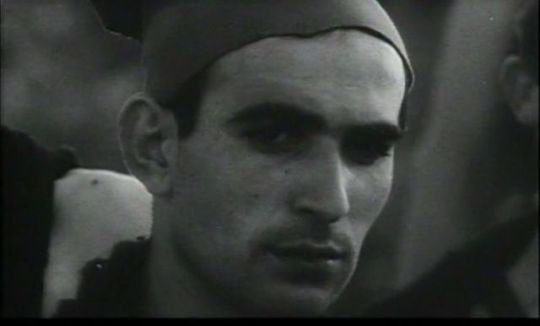
(Pasolini) Hardscrabble Religious Image (The Gospel According to St. Mathew)
I think one could reasonably argue that in modern art, including cinema, including cinema that touches upon “the spiritual in art,” the background frames are more important than the figures operating on the foreground. The ones that grabbed me most in Pasolini’s classic black and white The Gospel According to St. Matthew are the dark, hardscrabble shots. These are the flinty landscapes, Herod’s rough and buff young man-soldiers at the massacre of the innocents, stony Jerusalem cityscapes, tough priests and imposing headgear, and the death of Judas by suicide. We could organize these under the rubrics “landscape,” “cityscape,” and “anthro-scape.” Drawn from southern Italy, the created environment is inhospitable to life. In this piece of Vitalist visual thinking, the rough material and cruel social substrate appears as if dead in order to highlight the mysterious, life-sustaining miracle of the revelation. Reflecting no doubt a Jewish prejudice of my own construction, I was less drawn to the shots of Jesus and his companions. Just too pretty, Jesus and Mary were unable to match the raw topographical, urban, and human brutality of the background. To do that, they would have needed to be as nasty, brute, and “ugly.”
More so than the figure of Jesus himself and the gospel words, it was the soundtrack that carried for this viewer the strong sense of “spirit.” There was Bach (Mass in B Minor) along with Odetta’s “Sometimes I Feel Like a Motherless Child,” Blind Willie Johnson’s “Dark Was the Night, Cold Was the Ground,” the thundering “Gloria” from the Congolese Missa Luba, and a quiet Kol Nidre. All of these were complemented by the haunting sound of “wind” insinuating itself over the landscape, the literal form of spirit as ruaḥ.
About sound in relation to topography I’m grabbing a piece from Deleuze in Cinema 2. He’s not writing here about Pasolini per se, but he makes good sense of the point I’m trying to make. That point concerns how in film the “aesthetic of the visual image …takes on a new character: its pictorial or sculptural qualities depend on a geological, tectonic power as in Cezanne’s mountains…The visual image reveals its geological strata or foundations, whilst the act of speech and also of music becomes for its part founder [sic], ethereal (Cinema 2, p.246). (The use of that term “ethereal” gives Deleuze away; it appears, he had an eye and an ear for “the spiritual in art.”)
In avant-garde films like the Gospel According to St. Matthew, what should be most clear is that narrative-linguistic content is subordinate to images, understood as poetic. This seems especially necessary in movies that handle religious or spiritual material in which “content” threatens to overwhelm and flatten the aesthetic sensation that shapes the shape of the content. The opposition between poetry and prose is one of the basic points in Pasolini’s well-known essay “The Cinema of Poetry” (1965). There he develops the idea of the irreducibly irrational, oneiric essence of cinema as being more like poetry than prose. While I would reject much of Pasolini’s thinking as too binary in structure, the structure gives one a good idea regarding what to look for in his larger body of work, this film included. Simply put, the landscape in the background, I would argue, is more irascible than the primary figures. In much the same way, Derrida privileged the picture frame over the picture in his unjustly neglected Truth in Painting.
http://ift.tt/2aDYVJs You can read all of “The Cinema of Poetry” here. While it is not Pasolini’s intention in this essay to write about religion and art, I want to focus on how his analysis highlights the brute irrational as the most “significant” component in “the spiritual in art.” Again I want to direct attention to environmental features such as a landscape, cityscape, and anthro-scape. Pasolini writes, “Here, we must immediately make a marginal observation: whereas the instruments of poetic or philosophical communication are already extremely perfected, truly form a historically complex system which has reached its maturity, those of the visual communication which is at the basis of cinematic language are altogether brute, instinctive. Indeed, gestures, the surrounding reality, as much as dreams and the mechanisms of memory, are of a virtually pre-human order, or at least at the limit of humanity in any case pre-grammatical and even premorphological (dreams are unconscious phenomena, as are mnemonic mechanisms; the gesture is an altogether elementary sign, etc.).”
Setting aside the semiotic terms of Pasolini’s analysis, about the imagistic quality of the shots that I selected above, see this 1965 interview, in which the filmmaker underscores again the brute, mystical and irrational, which in The Gospel According to St. Matthew are best evoked by non-human and inhumane features. http://ift.tt/2pHmLh2 Pasolini explains, “Although St. Matthew wrote without metrics, he would have the rhythm of epic and lyric production. And for this reason, I have renounced in the film any kind of realistic and naturalistic reconstruction. I completely abandoned any kind of archaeology and philology, which nevertheless interest me in themselves. I didn’t want to make an historical reconstruction. I preferred to leave things in their religious state, that is, their mythical state. Epic-mythic. Not desiring to reconstruct settings that were not philosophically exact—reconstructed on a sound stage by scene designers and technicians—and furthermore not wanting to reconstruct the ancient Jews, I was obliged to find everything—the characters and the ambiance—in reality.”
What is of interest here in the analogical method is the collapse of time into a single image that belong neither entirely to the past nor entirely to the present. The Gospel According to St. Matthew was intentionally made in such a way as to not resemble conventional biblical epics built on a logic of “representation.” The register is not historical, but nor is it ahistorical. Building on top of temporal strata (Scripture, Catholic tradition, and Italian art), the film is supra-historical in structure, the brute milieu being non-specific to the text and the time of its origins. The landscapes are what below we will see Deleuze refer to as “any-place-whatever.” In Pasolini’s film, the place of the film is southern Italy, not Roman Judea. The “jews” are Italian. Relating to what Deleuze called a “time-image,” I want to mean by this term simply the way the sense of the past and the sense of the present are crystalized into a single image. The image includes biblical gospel compressed alongside ongoing realities of poverty and revolutionary struggle, caught best in long shots devoid of either a human presence or sympathetic visage.
The reality has been made strange by film, and that too was deliberate. On shooting the film piece by piece, Pasolini describes his own working method as a filmmaker. “My work is facilitated by the fact that I never shoot entire scenes. Being a ‘non-professional’ director I’ve always had to ‘invent’ a technique that consists of shooting only a very brief bit at one time. Always in little bits—I never shoot a scene continuously. And so even if I’m using a non-actor lacking the technique of an actor, he’s able to sustain the part—the illusion—because the takes are so brief.” This then is the trick in relation to the shots framing my own analysis. On one hand, the sense of strangeness depends upon long and extended shots, the camera lingering in sharp, mosaic segments, on the other hand.
The roughness that is characteristic of the raggedy film-segment conveys something that Elizabeth Castelli observes in her introduction to her translation of St. Paul, the screenplay of an uncompleted project just published by Verso. Against what Pasolini dismissed as the modern “bourgeoisentropy,” Castelli notes his claim that modern consumerism “would overwhelm modern society and render the peasant and the worker invisible. Such entropy would, in his view, make unsentimental expressions of authenticity increasingly difficult, not to say completely impossible.” “Translating Pasolini Translating Paul” in St. Paul, Verso, 2017, p.28)
What I am picking up from Castelli is not the filmmaker’s otherwise unremarkable Marxist-Christian critique of modern capitalism. What matters more to the analysis offered here is how she flags Pasolini’s critique of sentimentality, which is a feature so often an infelicitous part of the warp and woof of religion and film. Pasolini’s shots of landscapes, cityscapes, and anthro-scapes are powerful as “religious” or “spiritual” only to the degree that they are, on the whole, the most unwarm quality of his film on Matthew.
This lack of sentiment glosses those silent moments and spaces, figures of alienation which are haunting as wordless and without world. About long topographical shots in Pasolini and in other works of postwar cinema, Deleuze is keen to show how the movement-image (i.e. the image of action, which, like language, works according to a cause-effect chronological sequence of an extended shot) is suspended in the compressed form of the time-image.
I can conclude this post no better than by citing Deleuze, who writes, “The break in the sensory-motor link does not only affect the speech-act turning in on itself and hollowing itself out, and in which the voice now refers only to itself and to other voices. It also affects the visual image, which now reveals the any-space-whatevers, empty or disconnected spaces characteristic of modern cinema. It is as if, speech having withdrawn from the image to become founding act, the image, for its part, raised the foundations of space, the ‘strata’, those silent powers of before or after speech, before or after man. The visual image becomes archaeological, stratigraphic, tectonic. Not that we are taken back to prehistory (there is an archaeology of the present), but to the deserted layers of our time which bury our own phantoms; to the lacunary layers which we juxtaposed according to variable orientations and connections. These are the deserts in German cities. These are the deserts of Pasolini, which make prehistory the abstract poetic element, the ‘essence’ co-present with our history, the archaean base which reveals an interminable history beneath our own” (Cinema 2 pp.243-4).
http://ift.tt/2pHE9Ct
3 notes
·
View notes